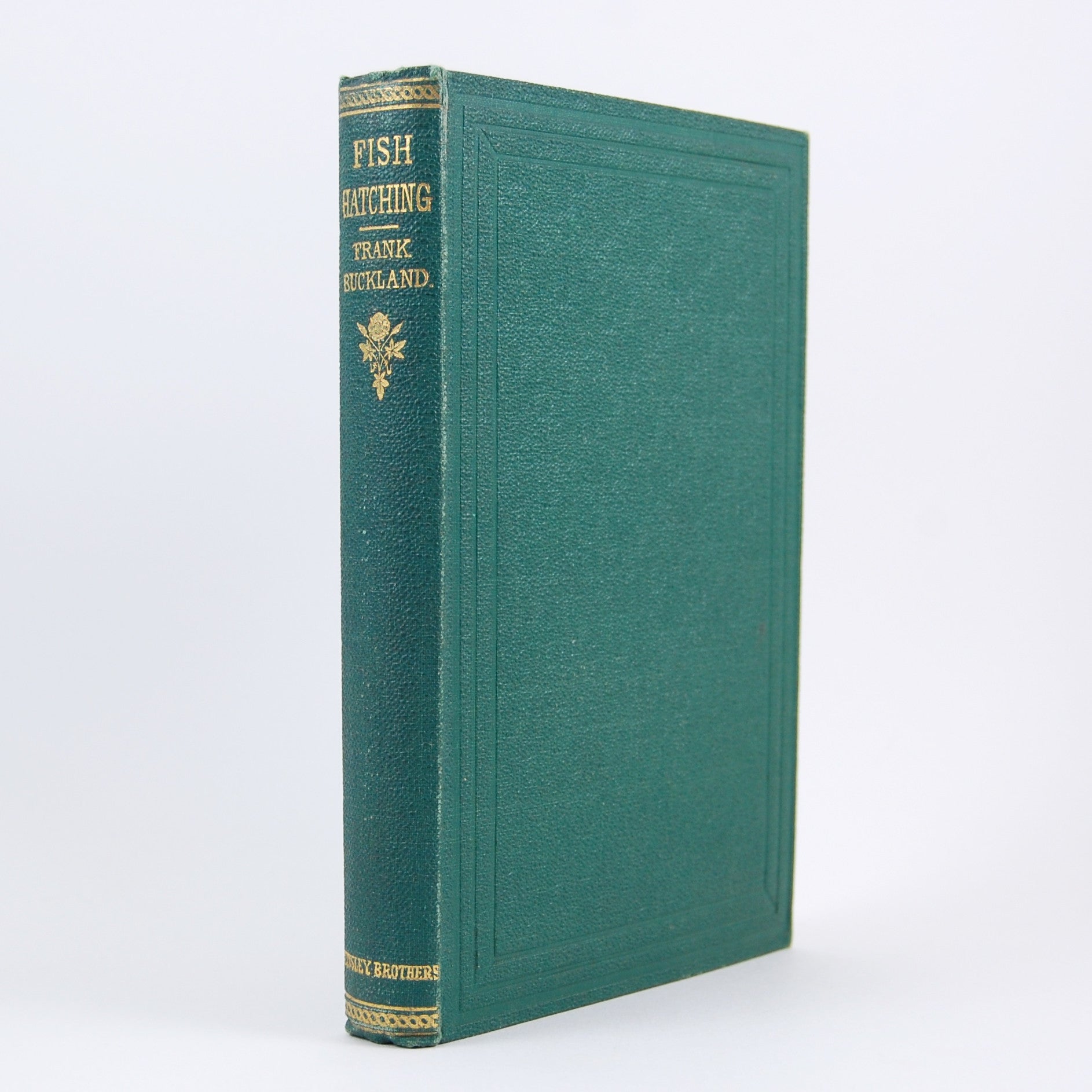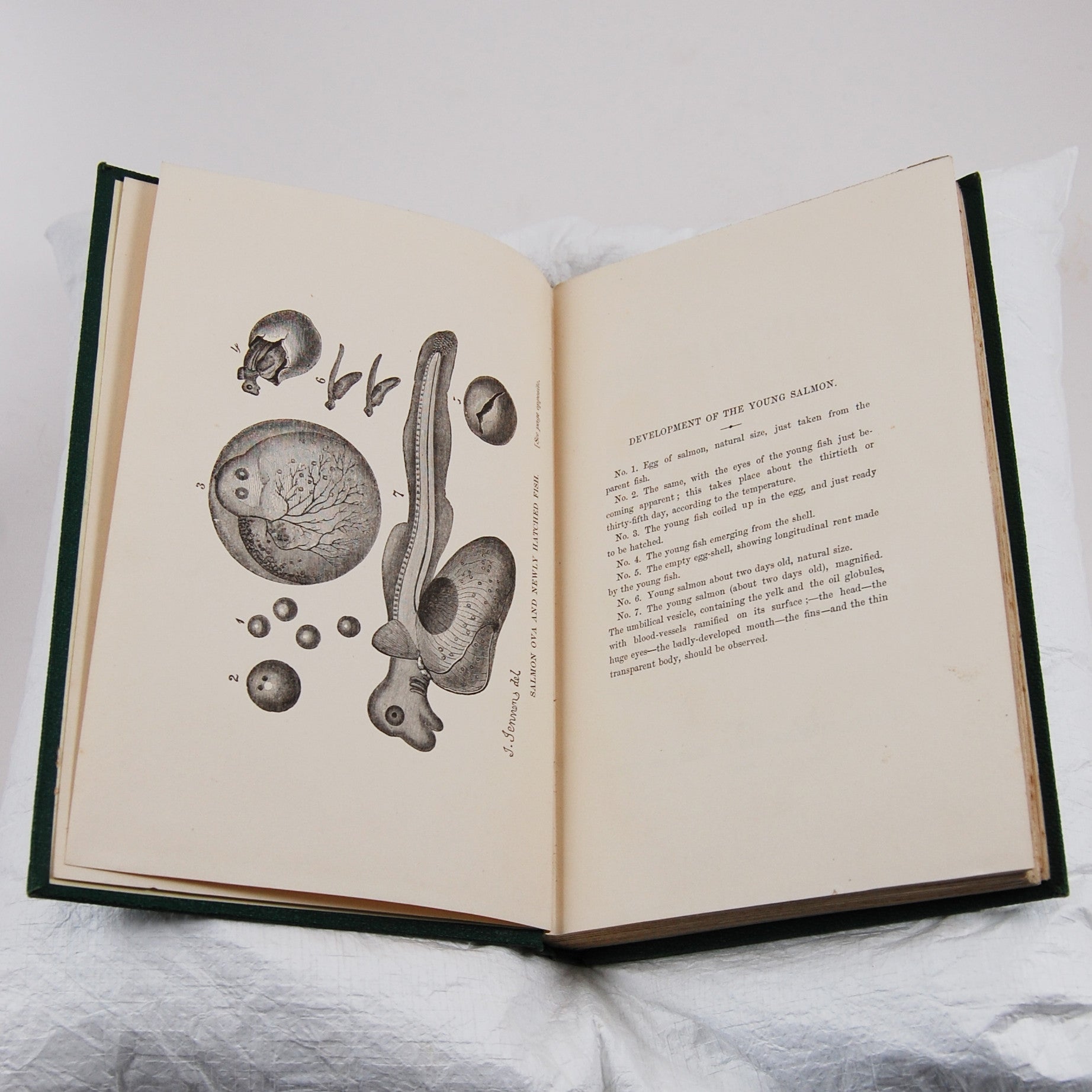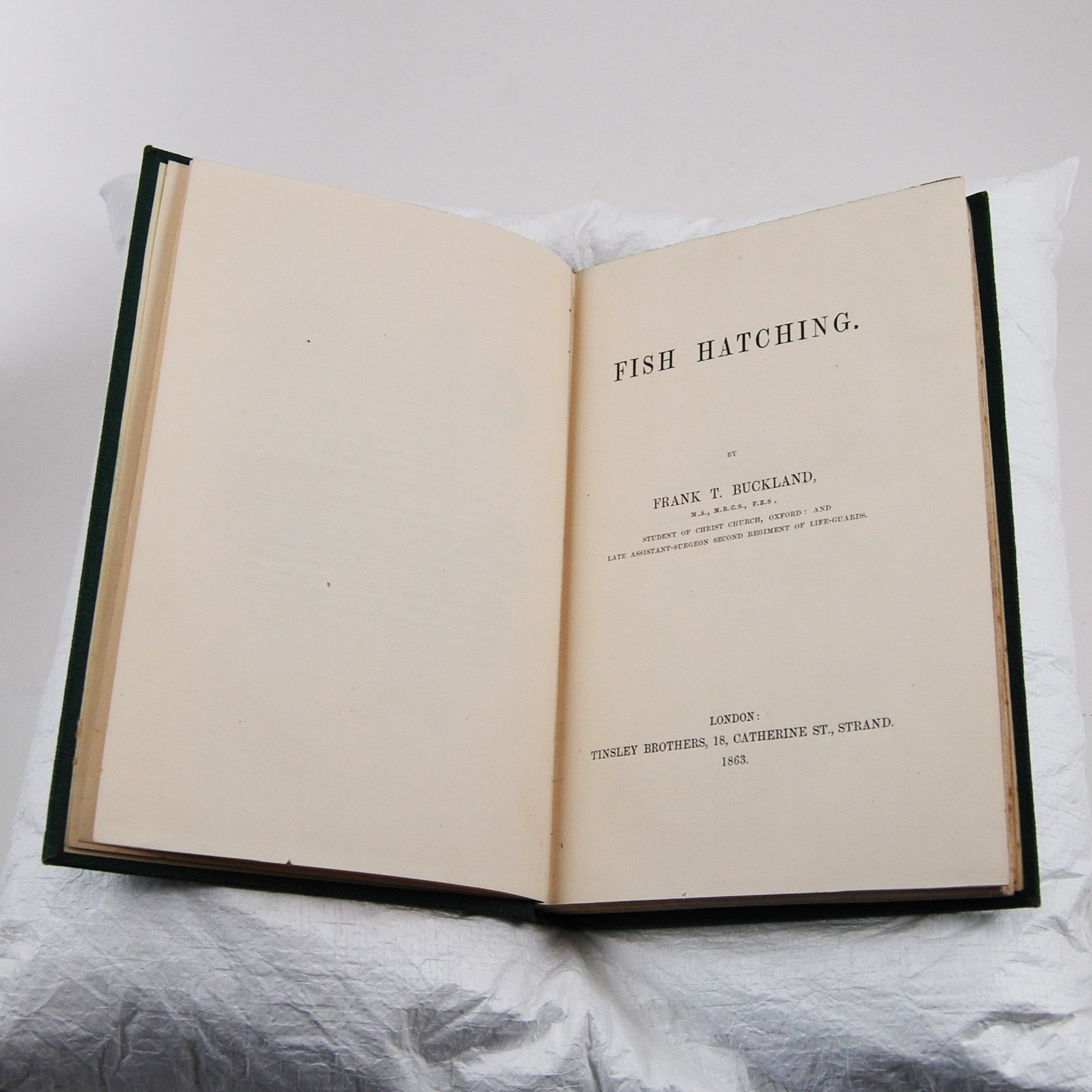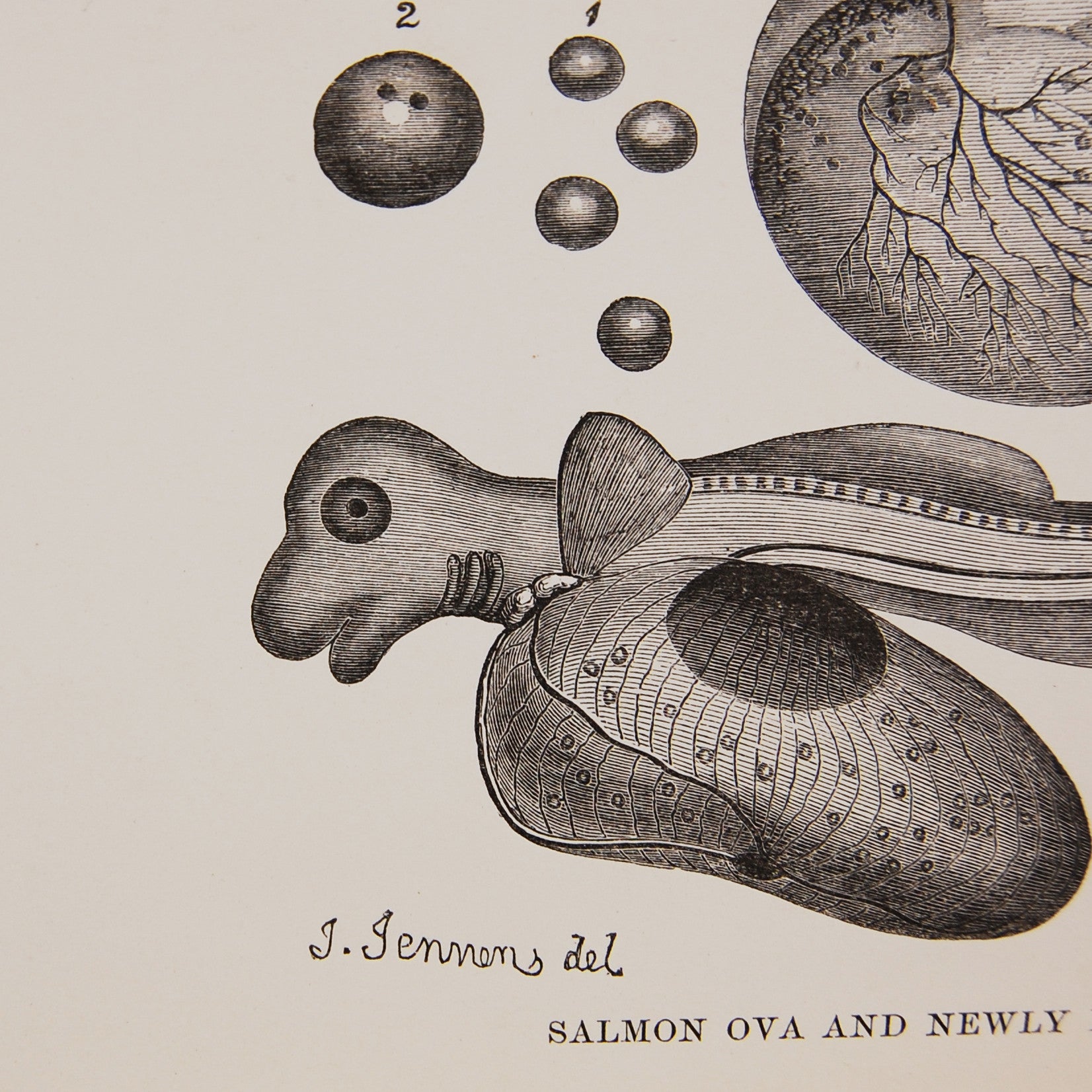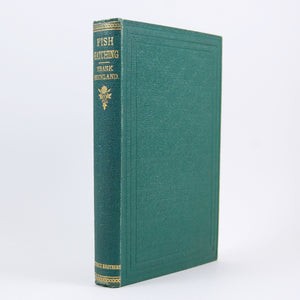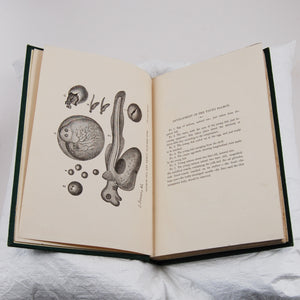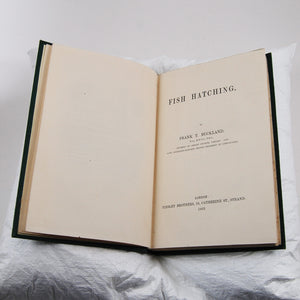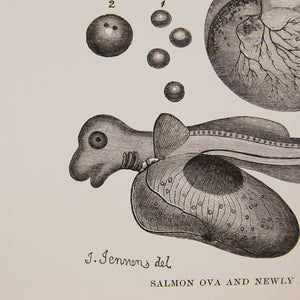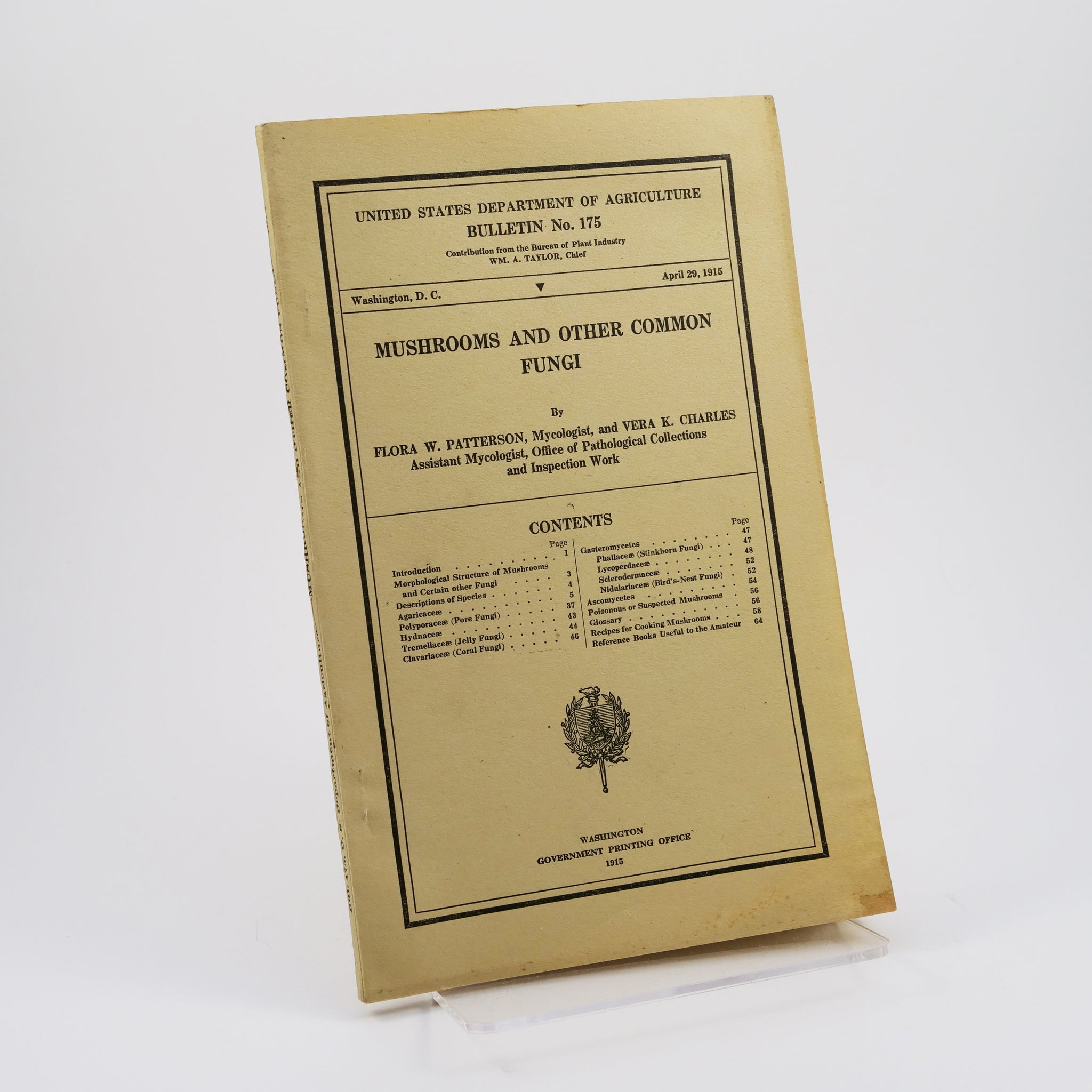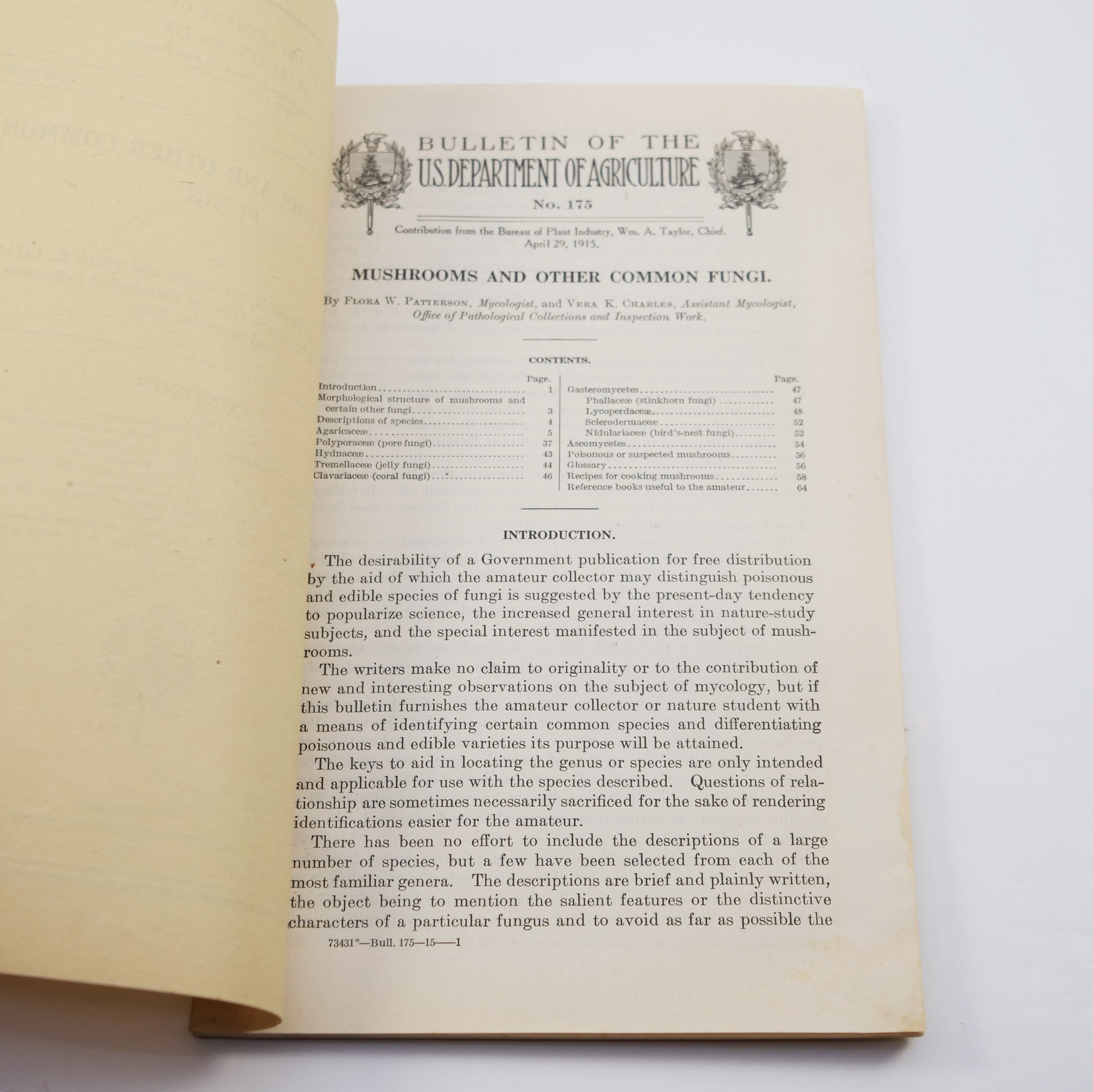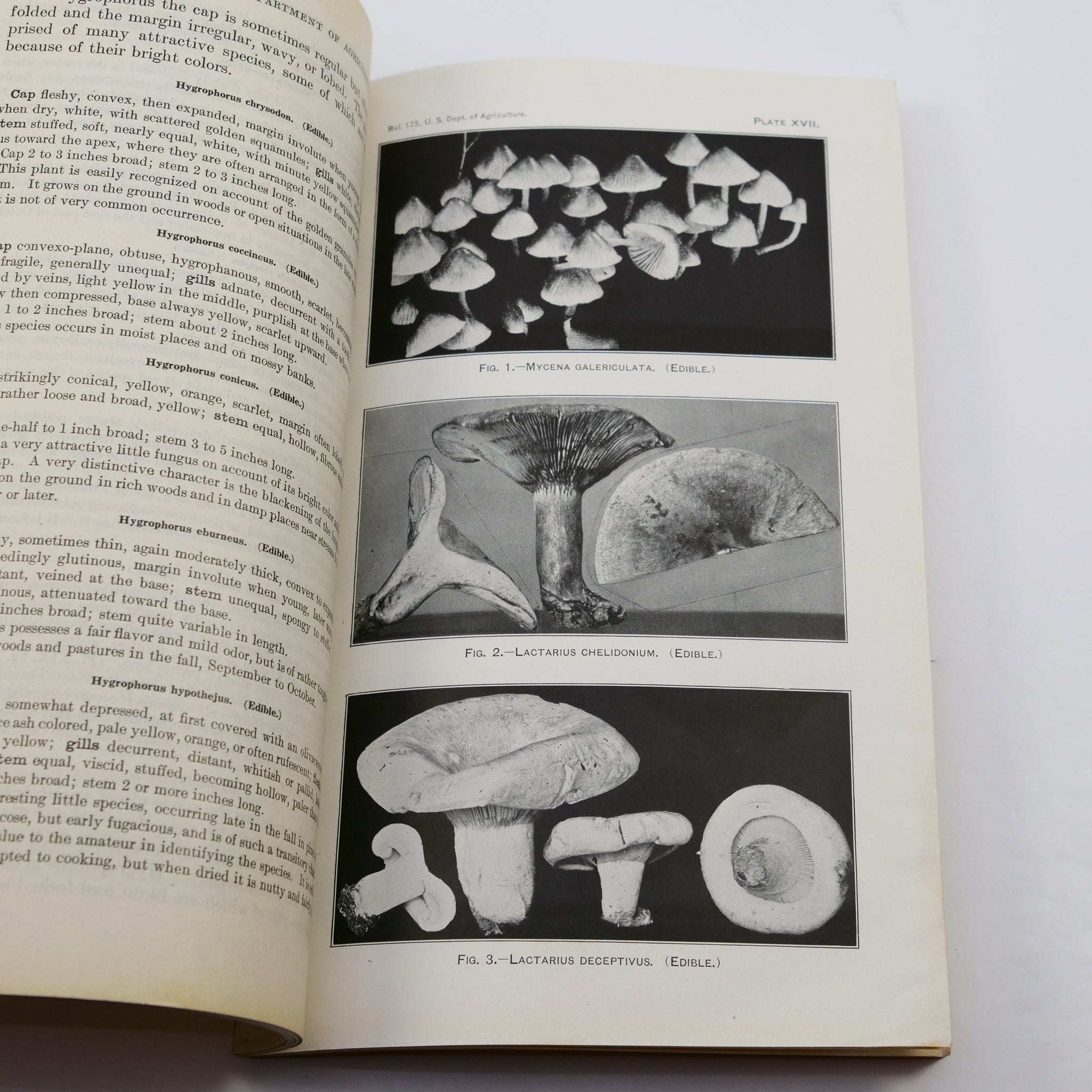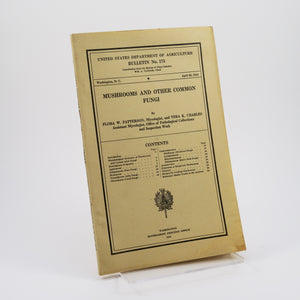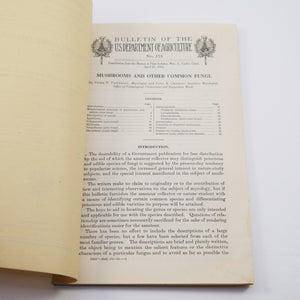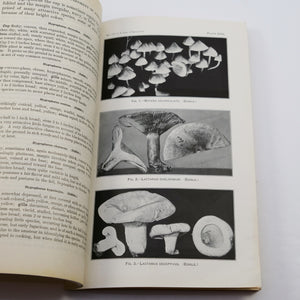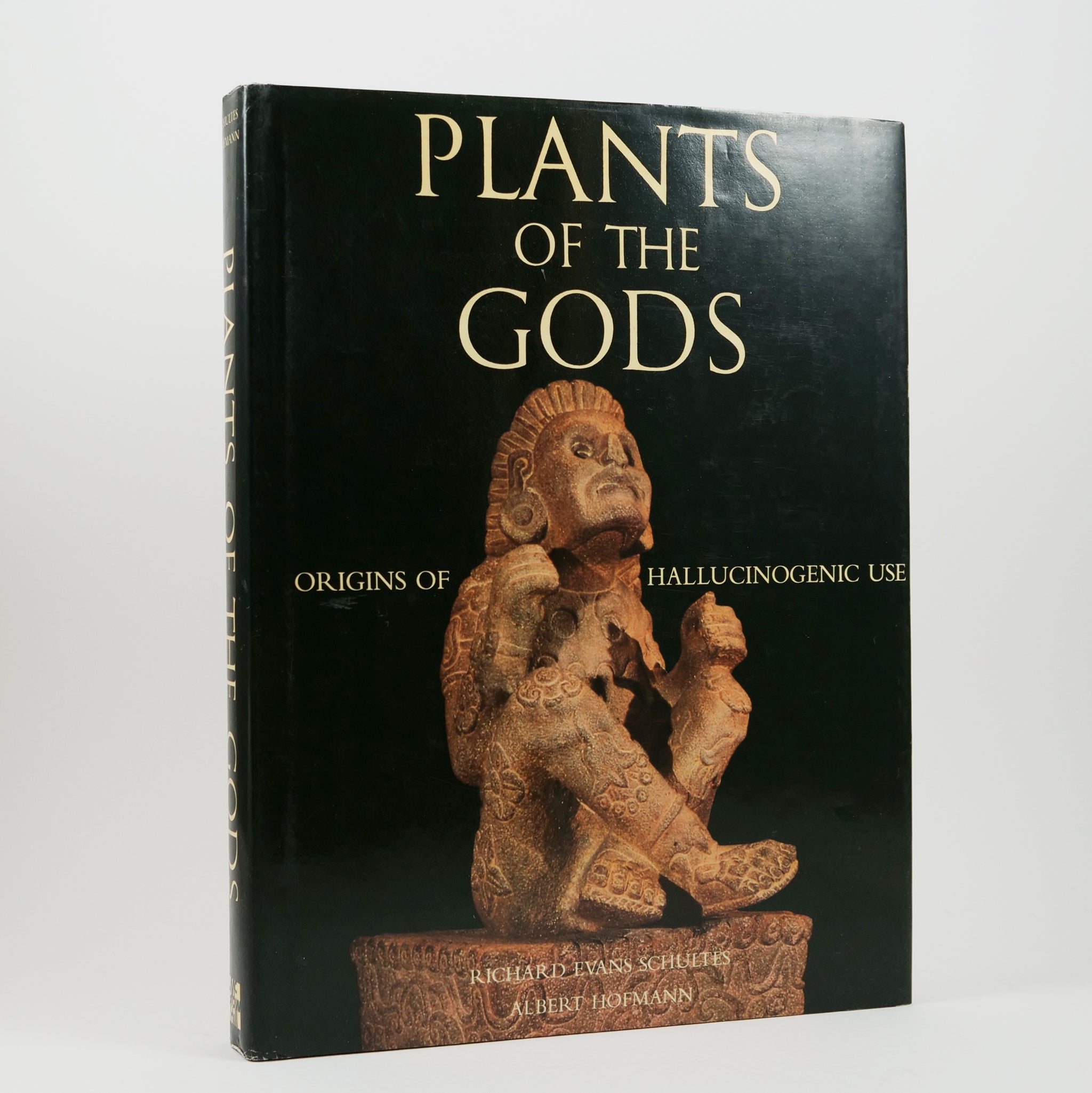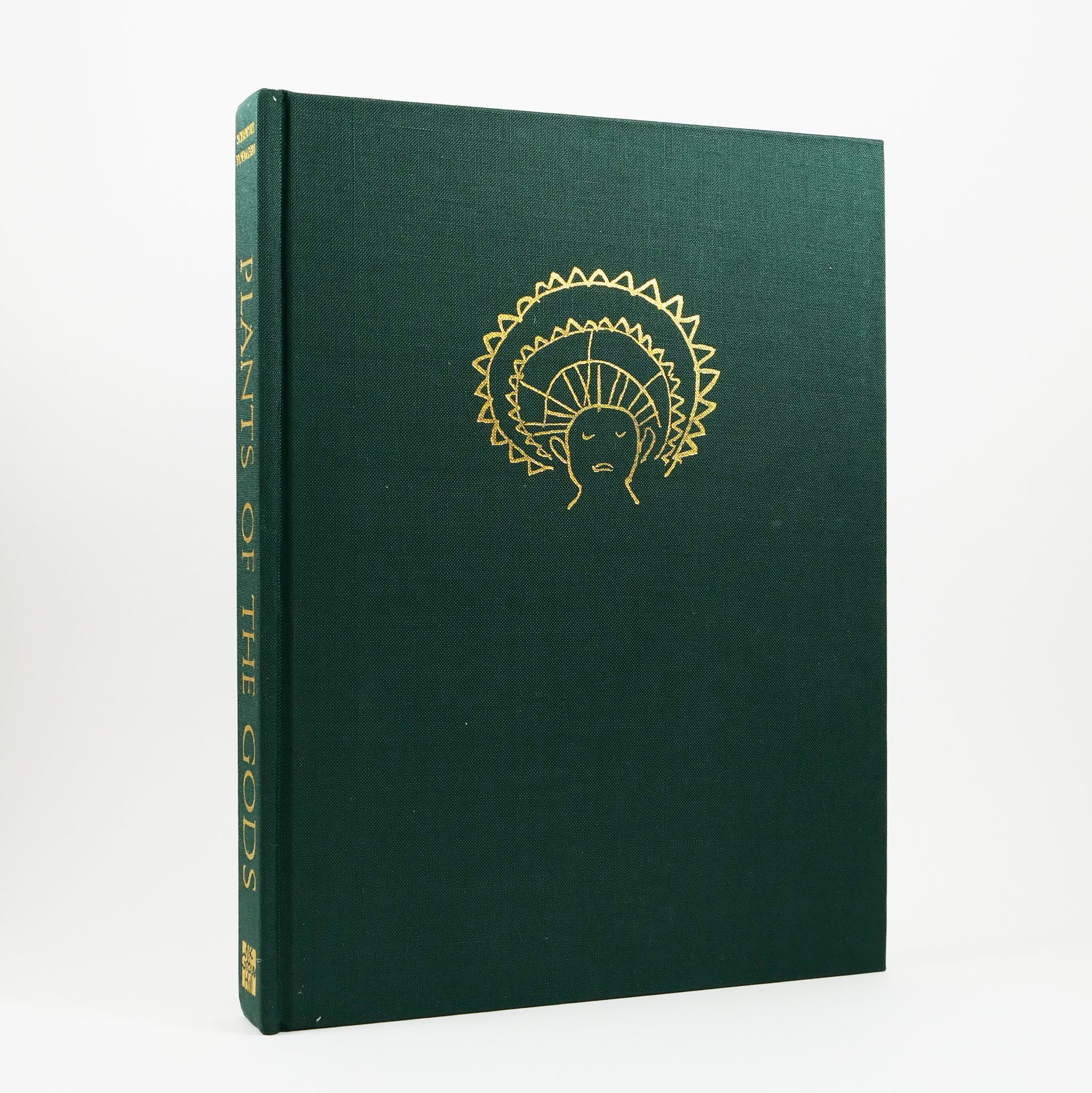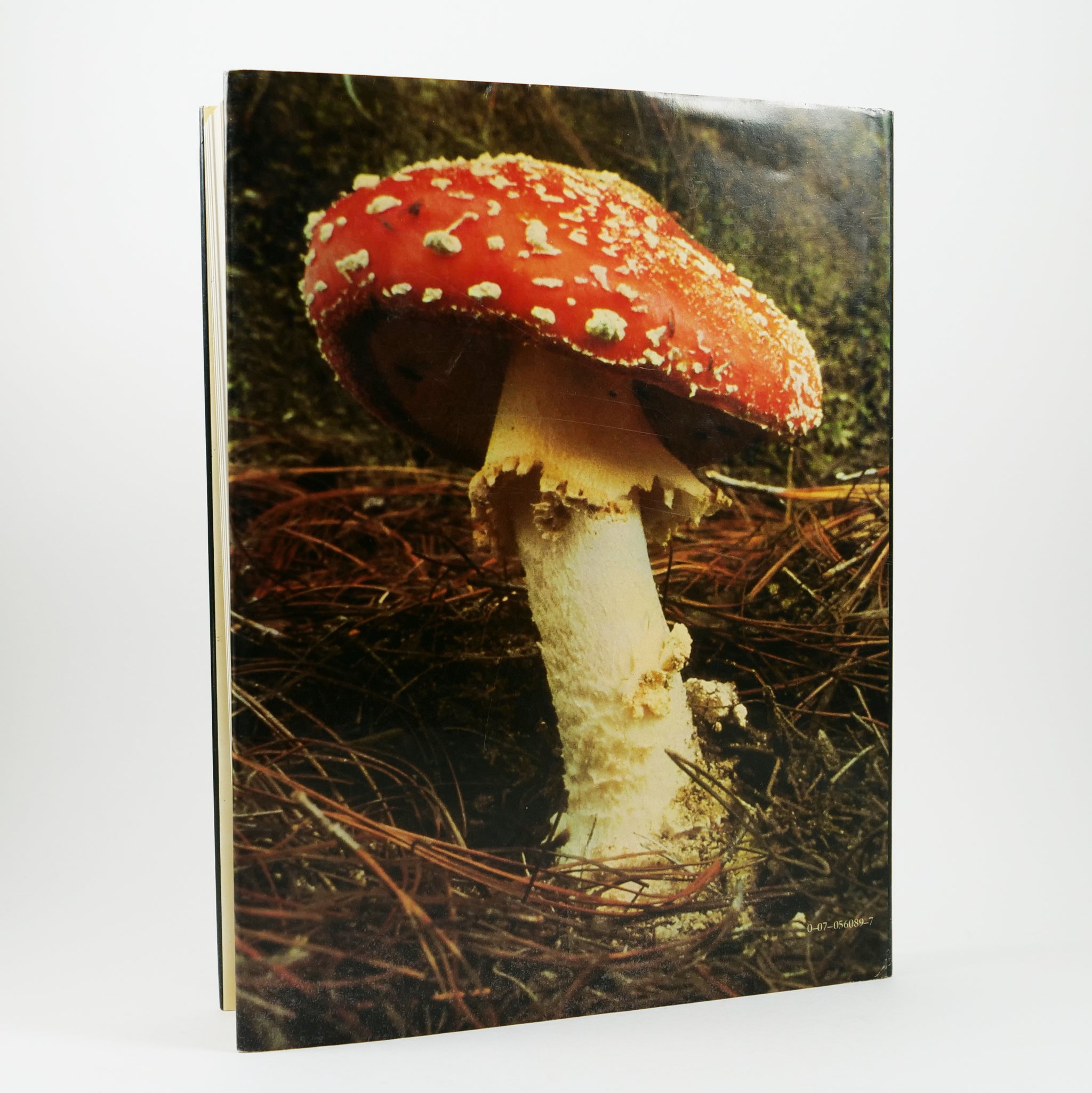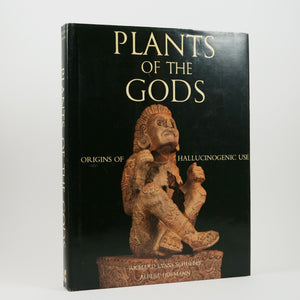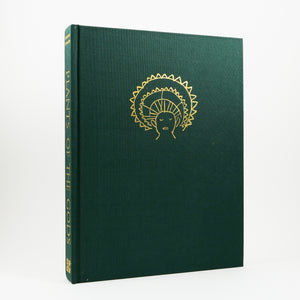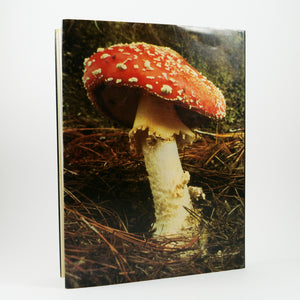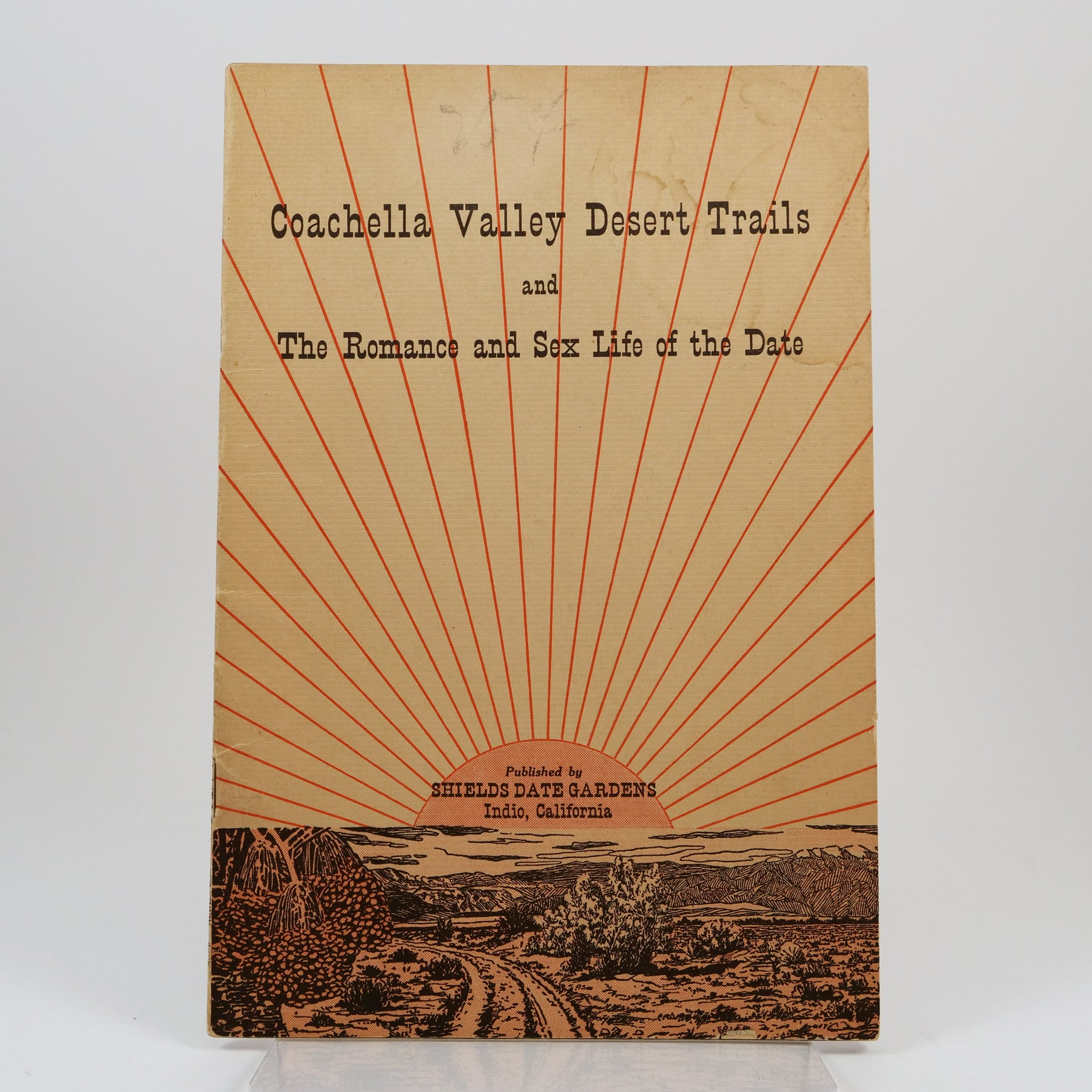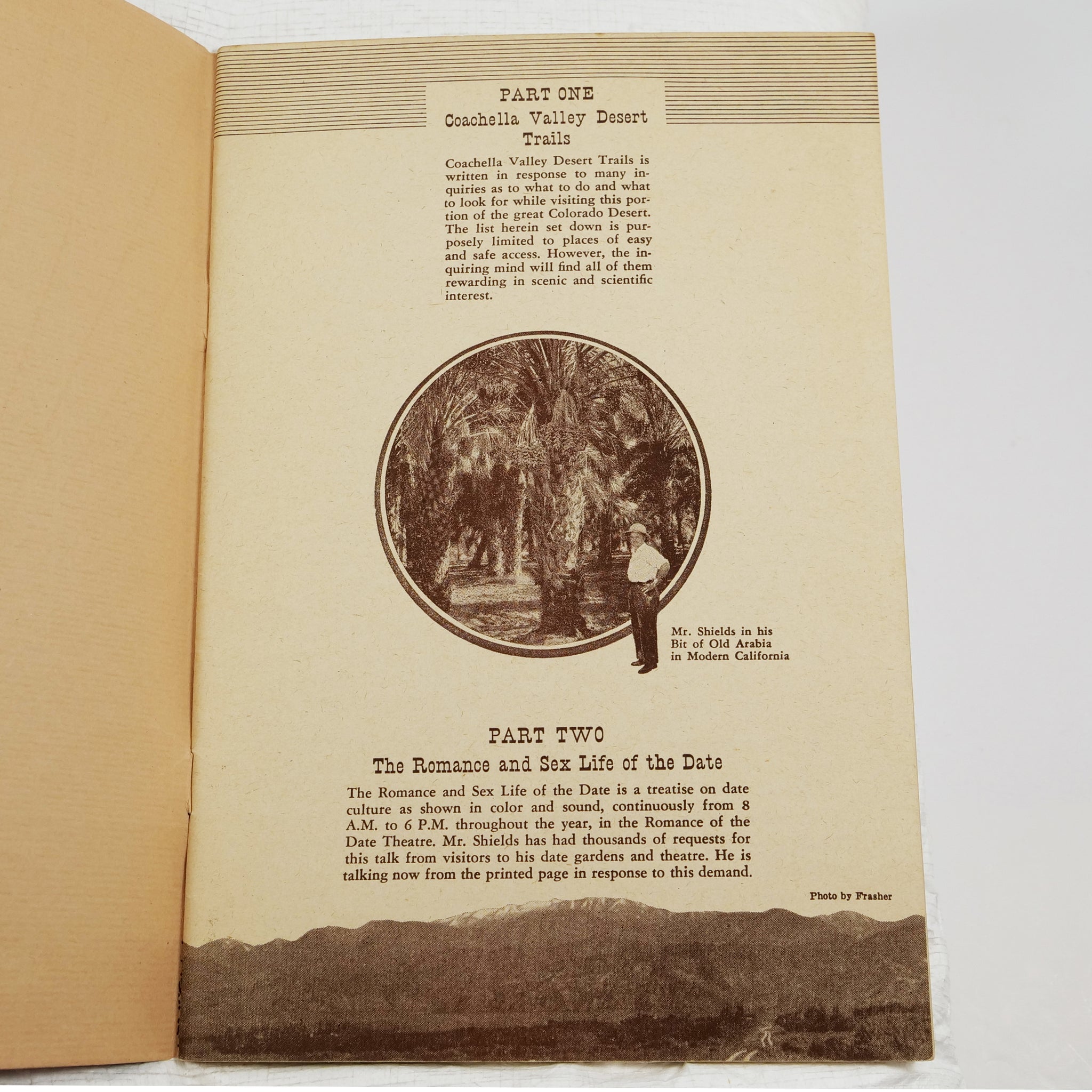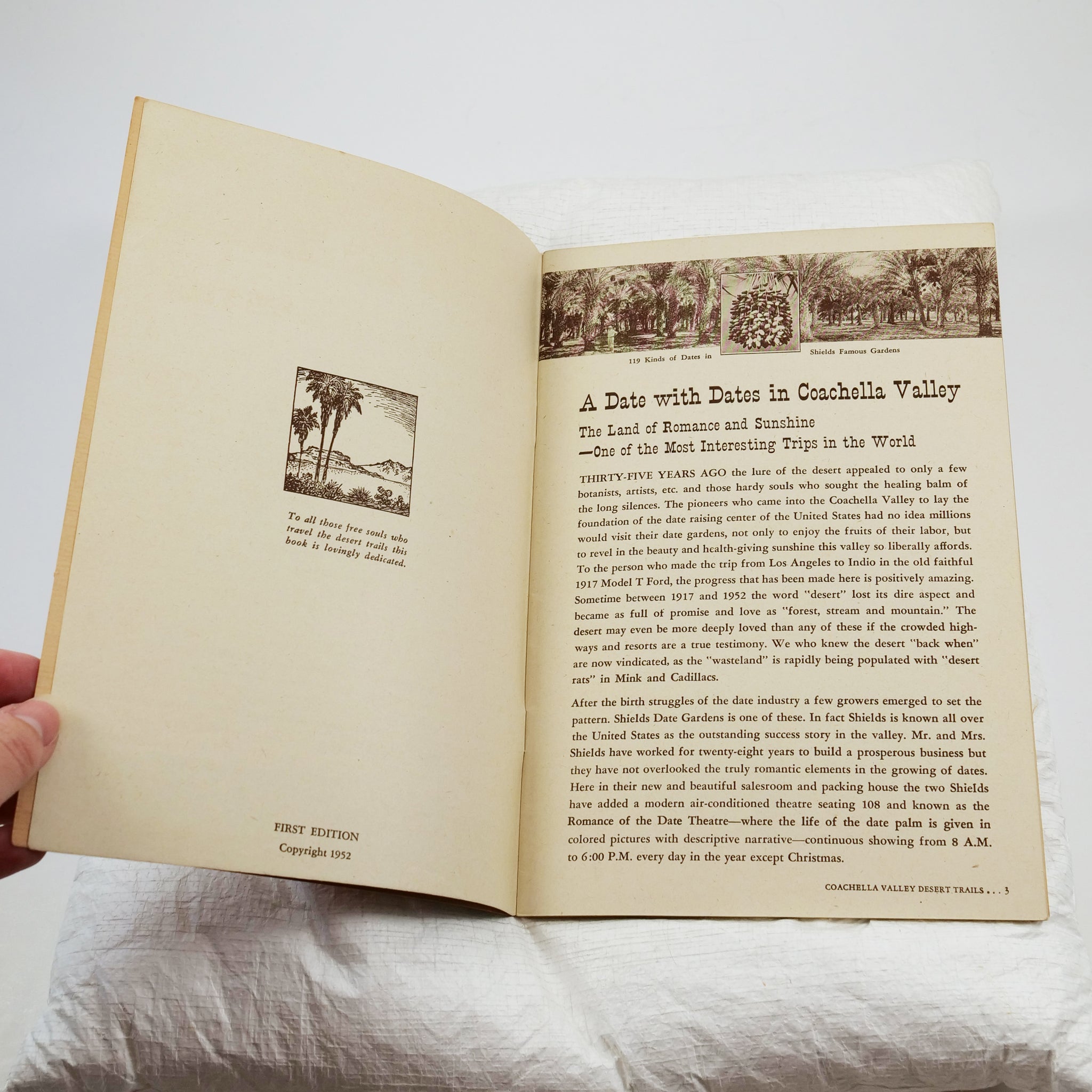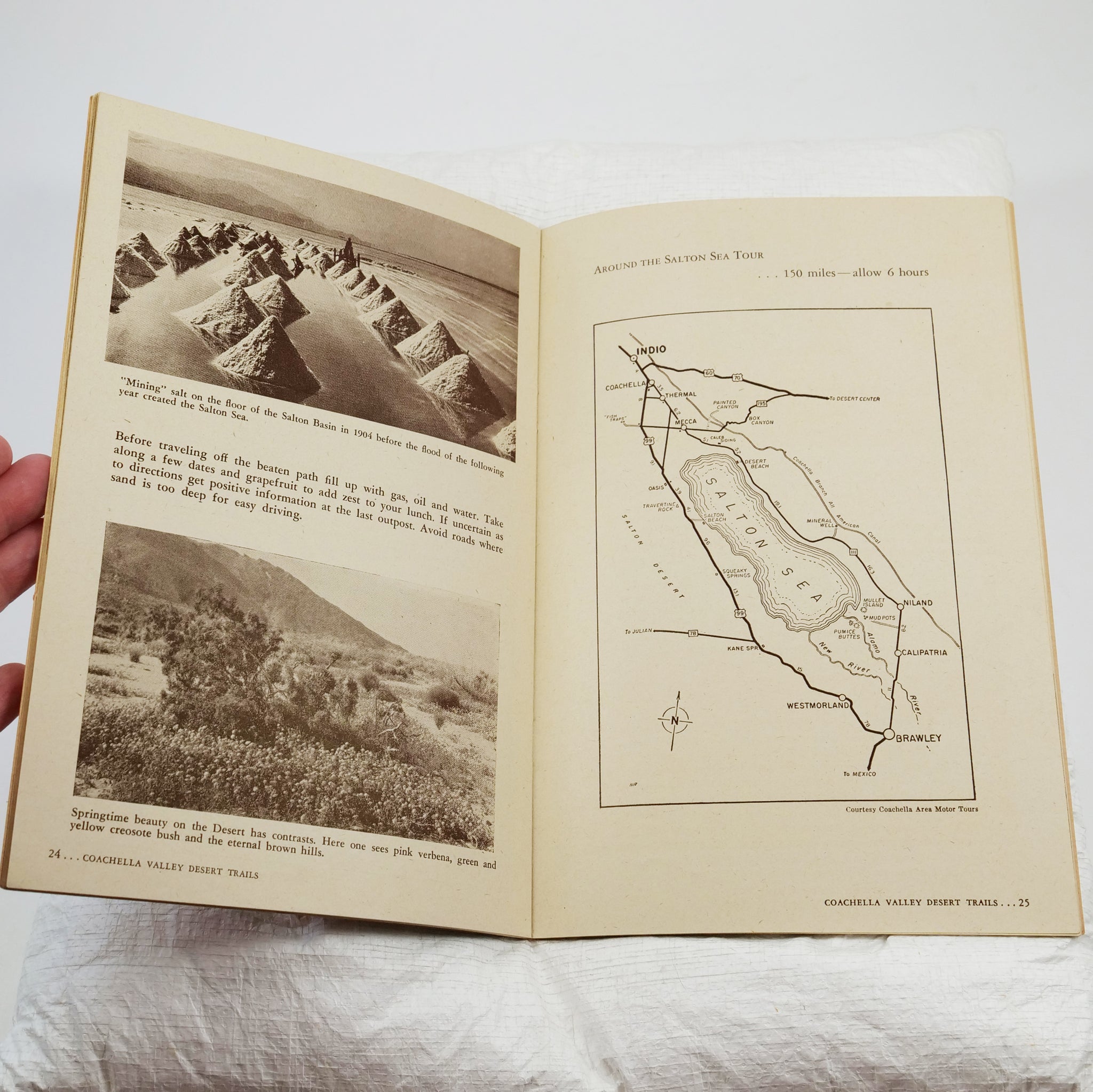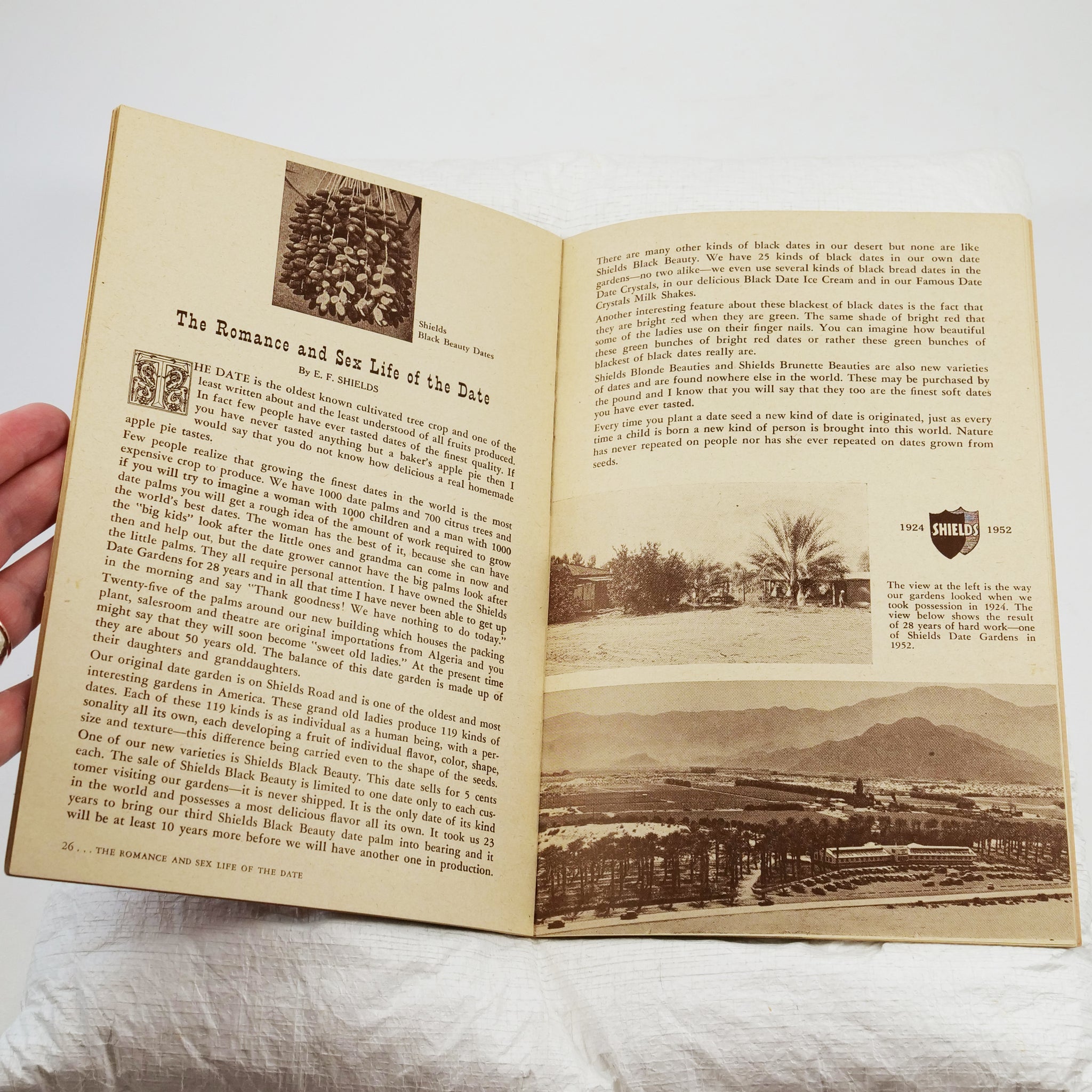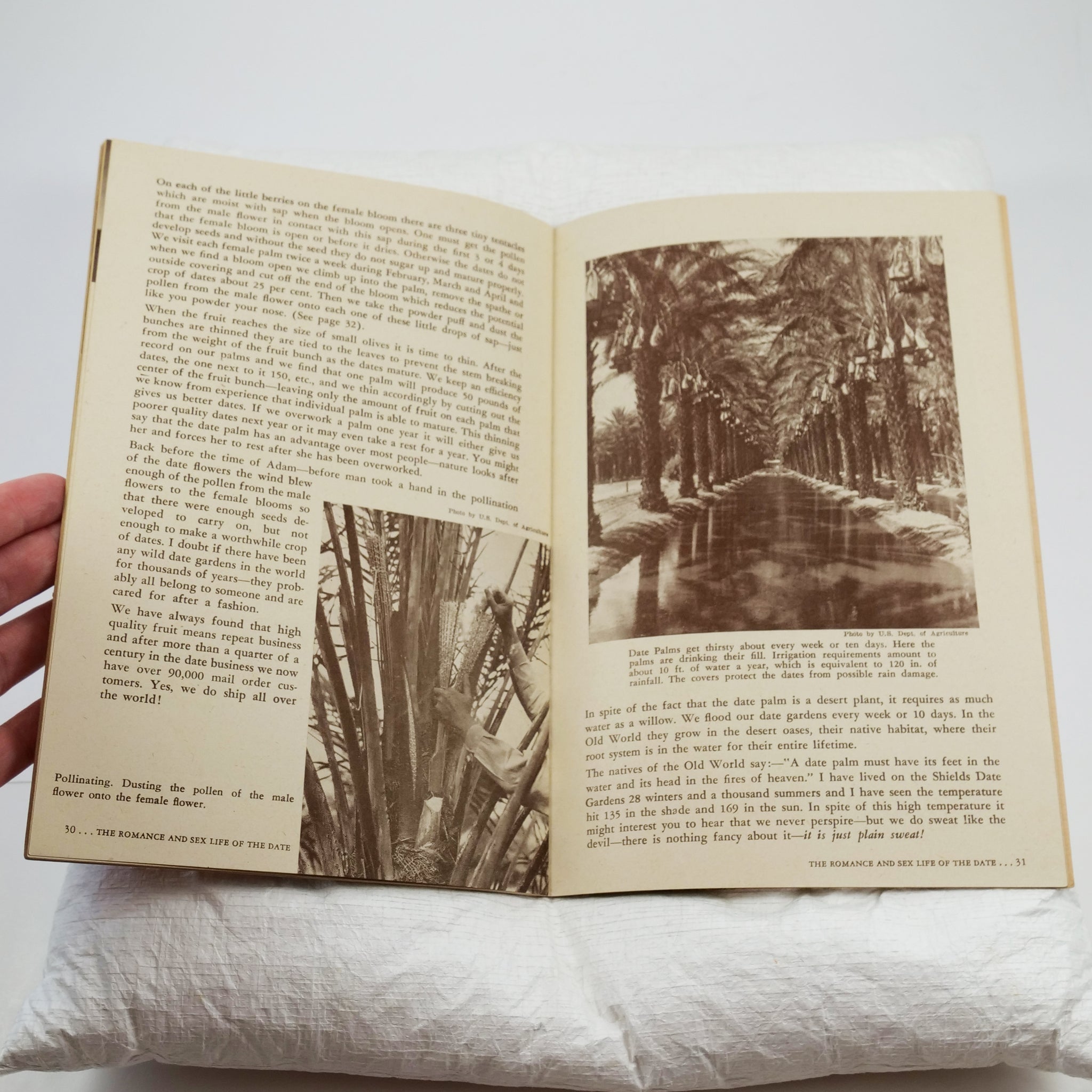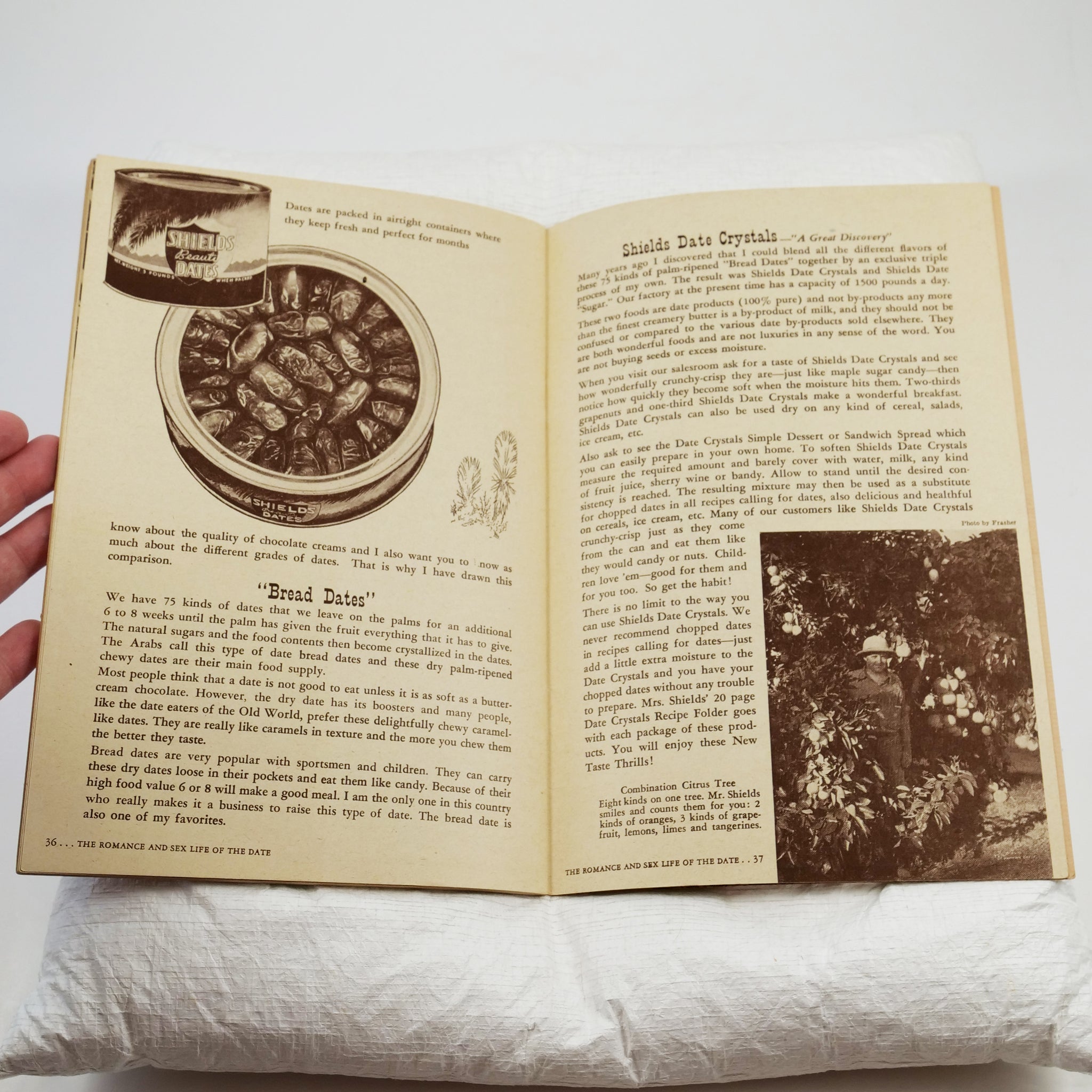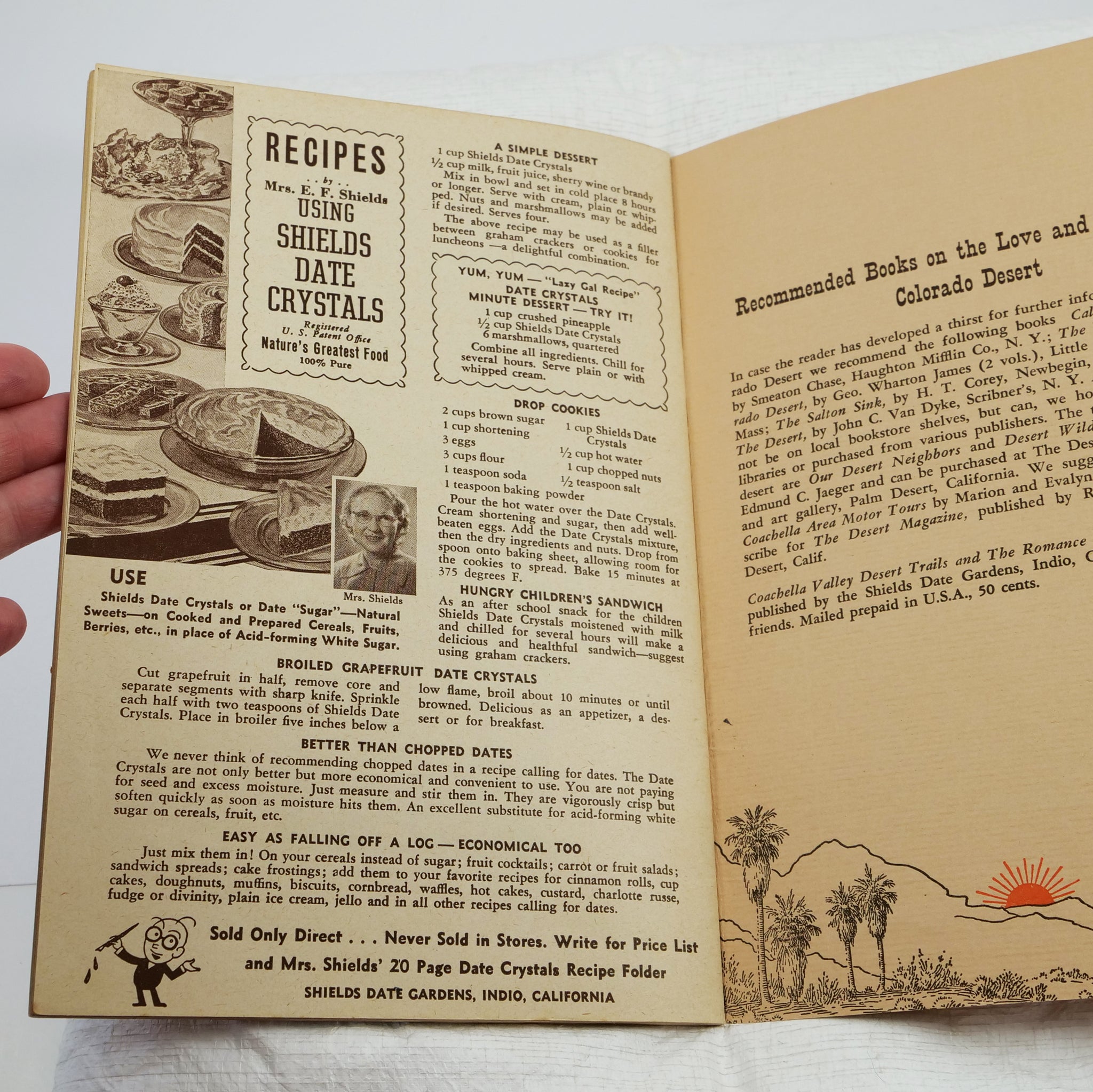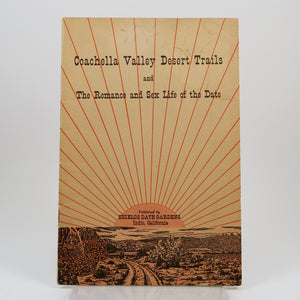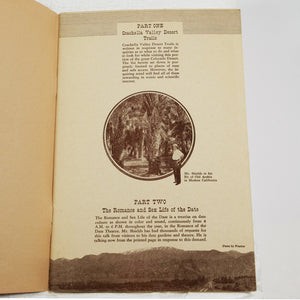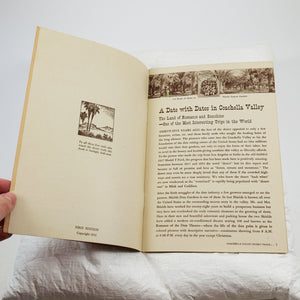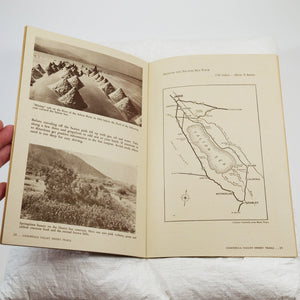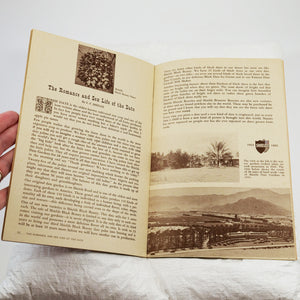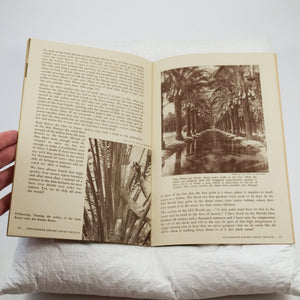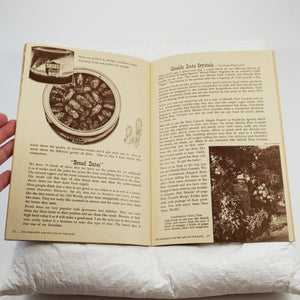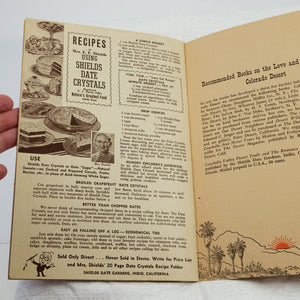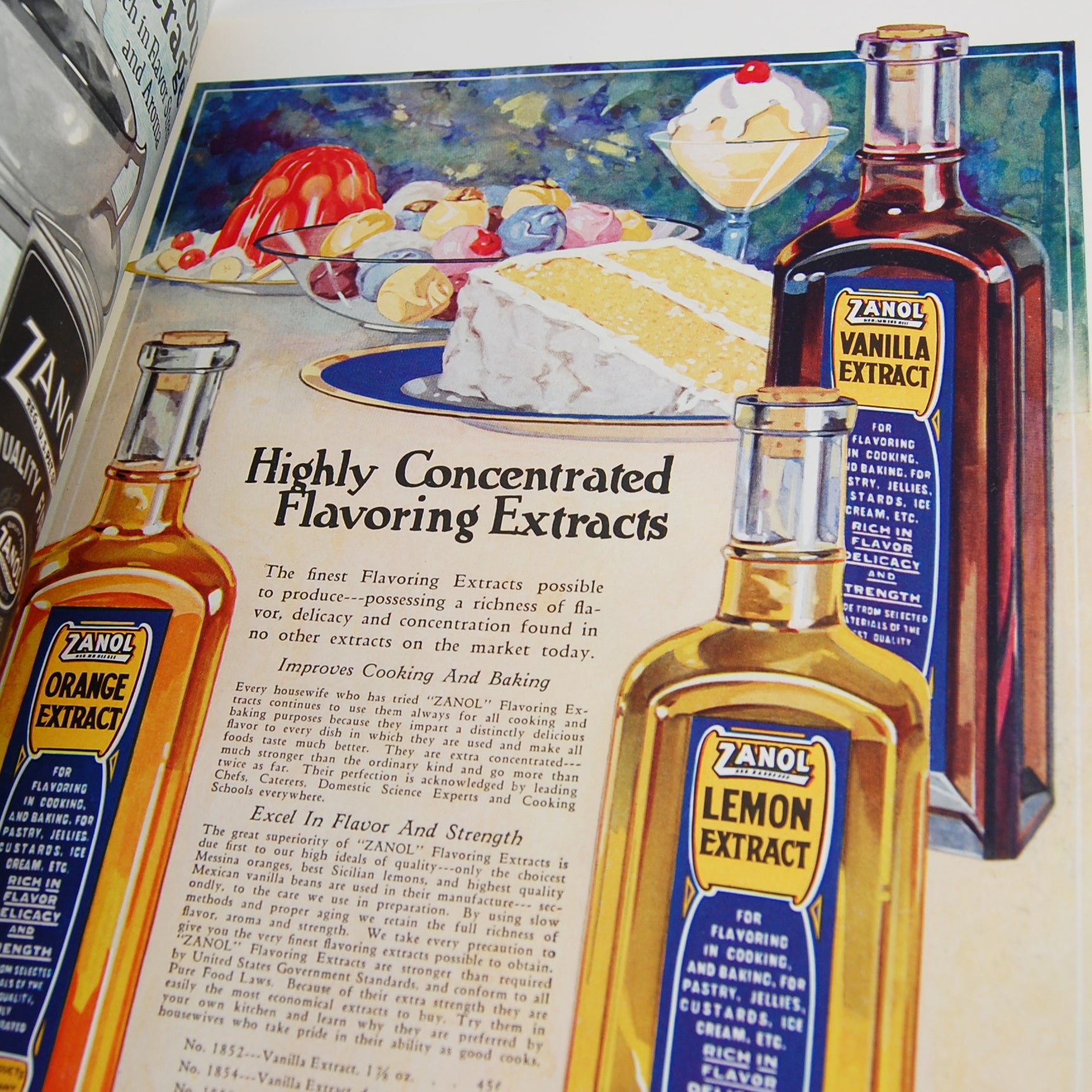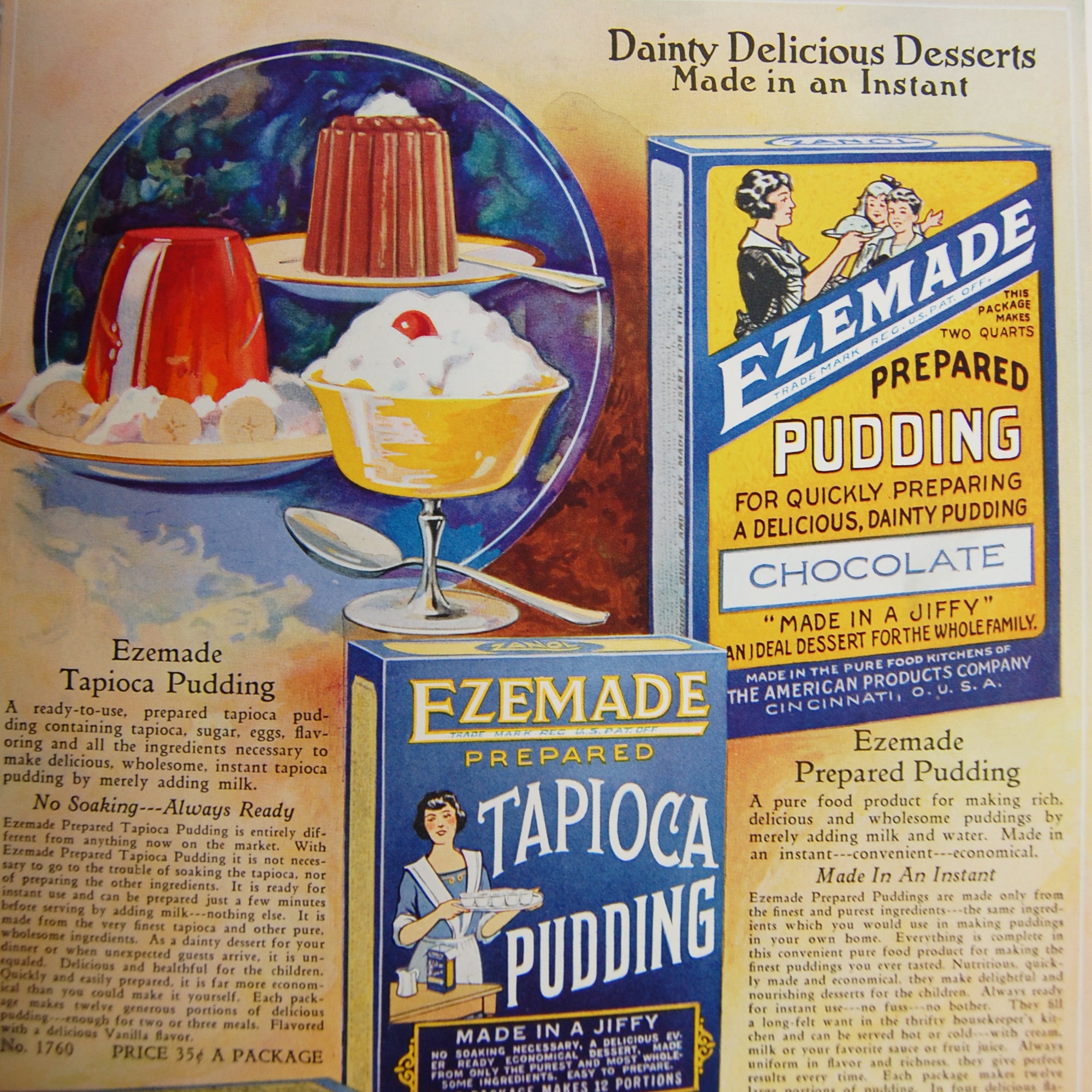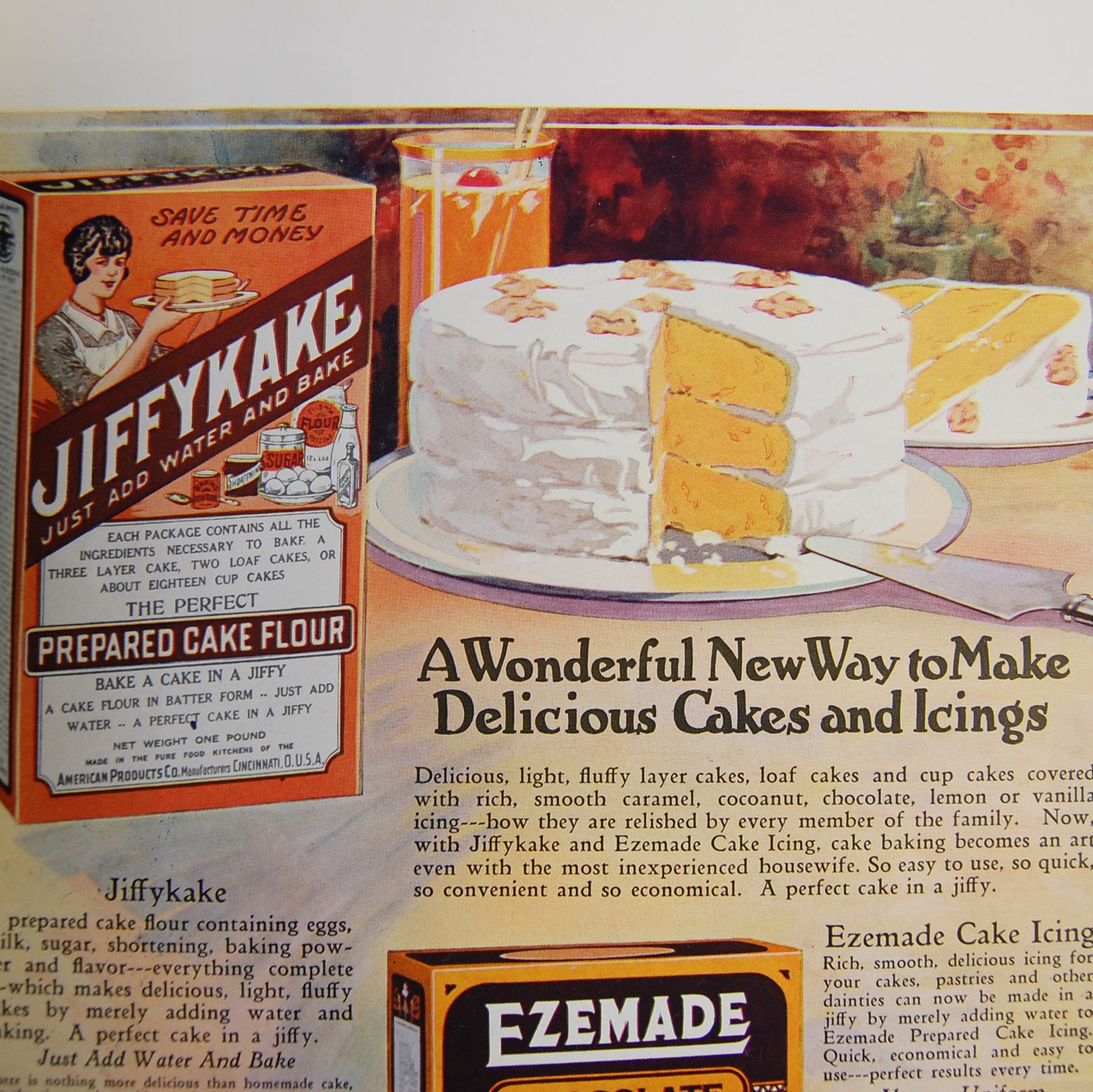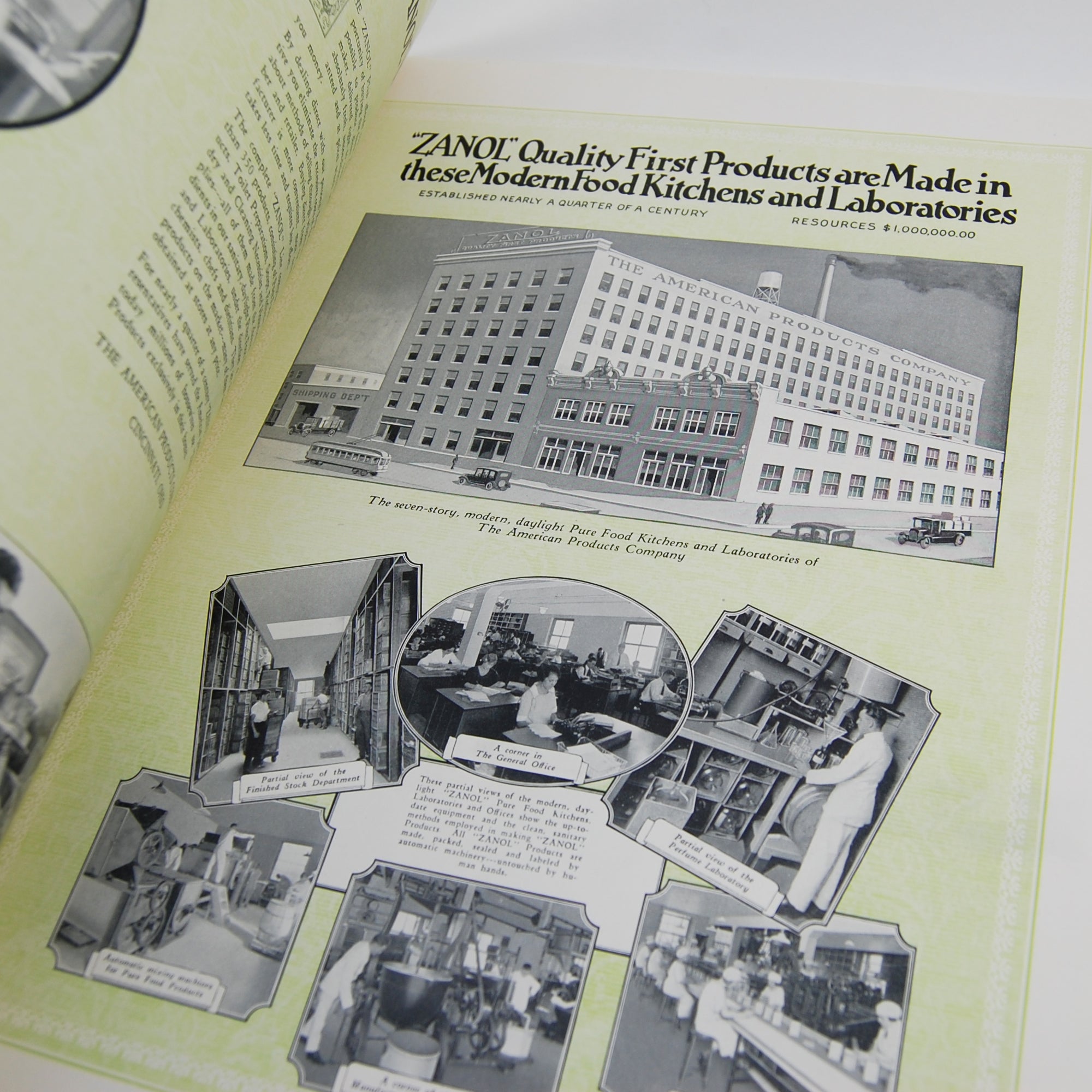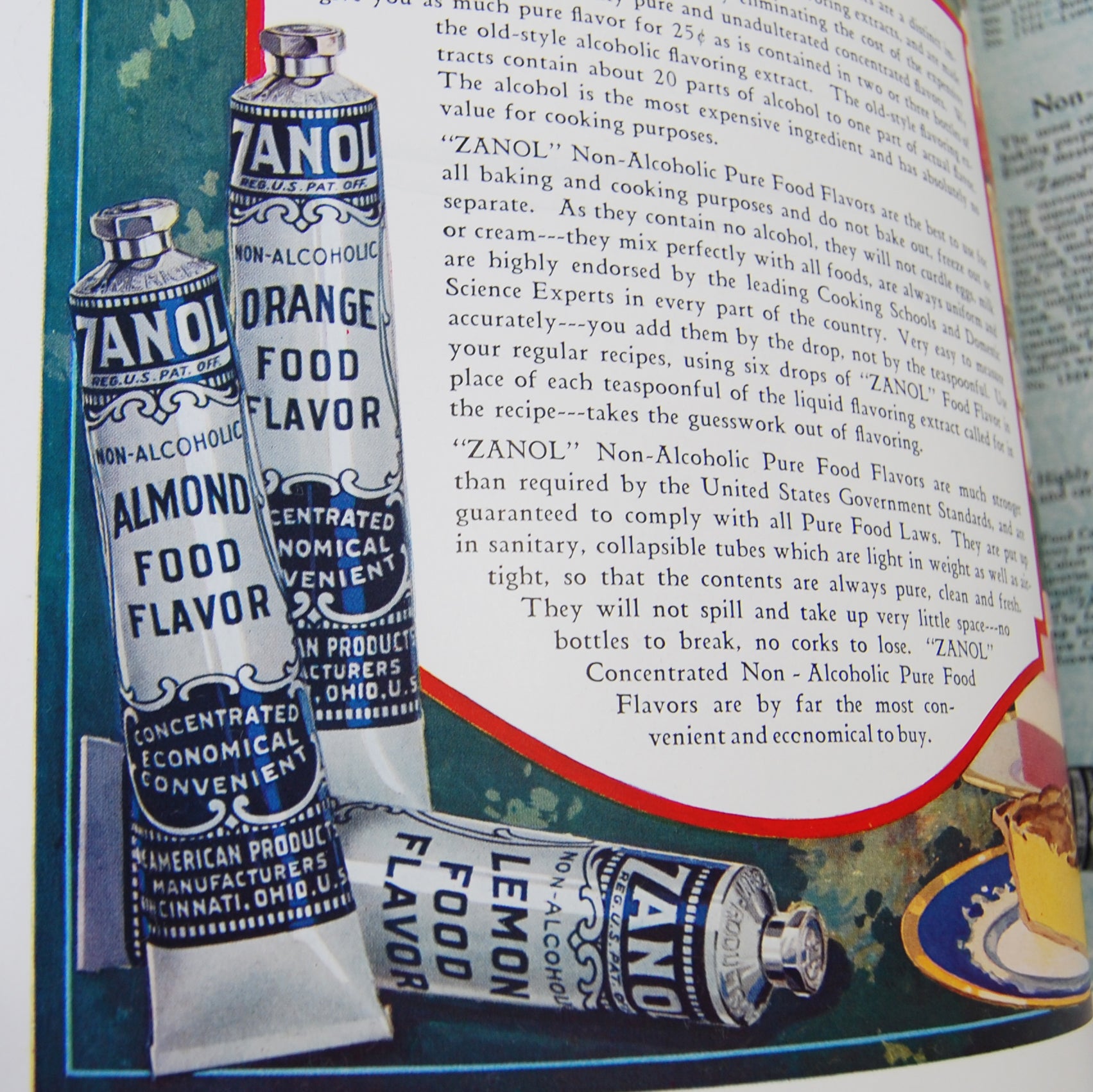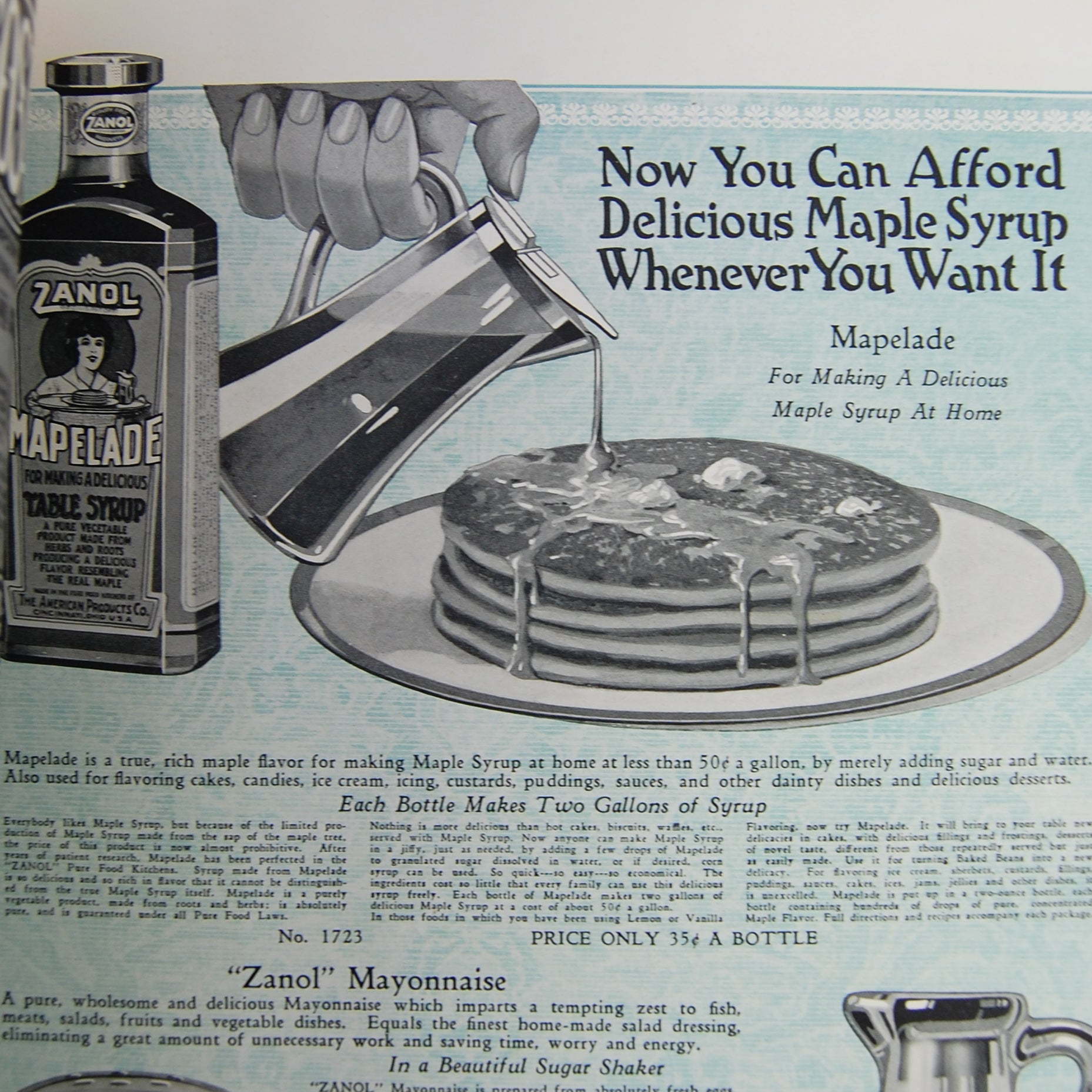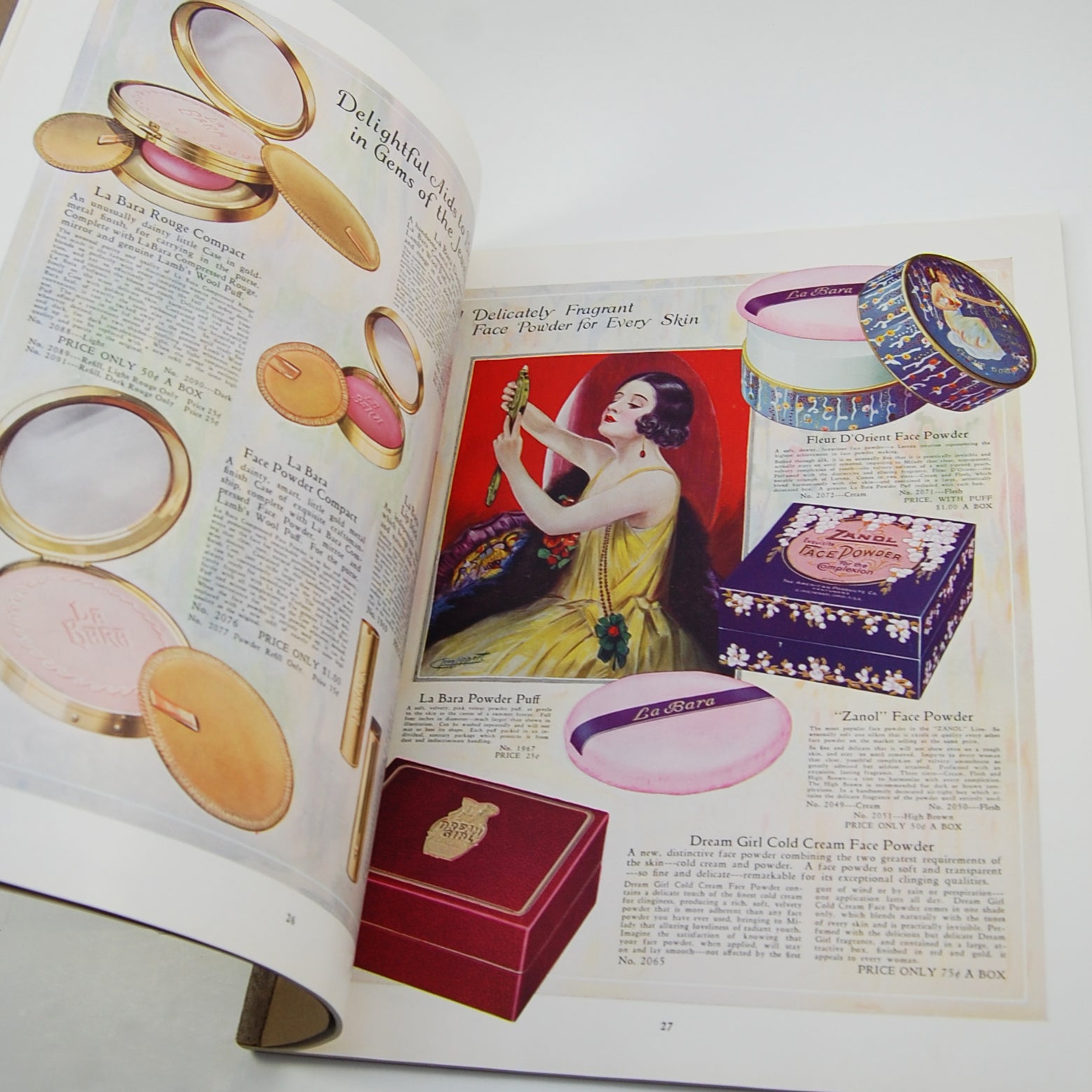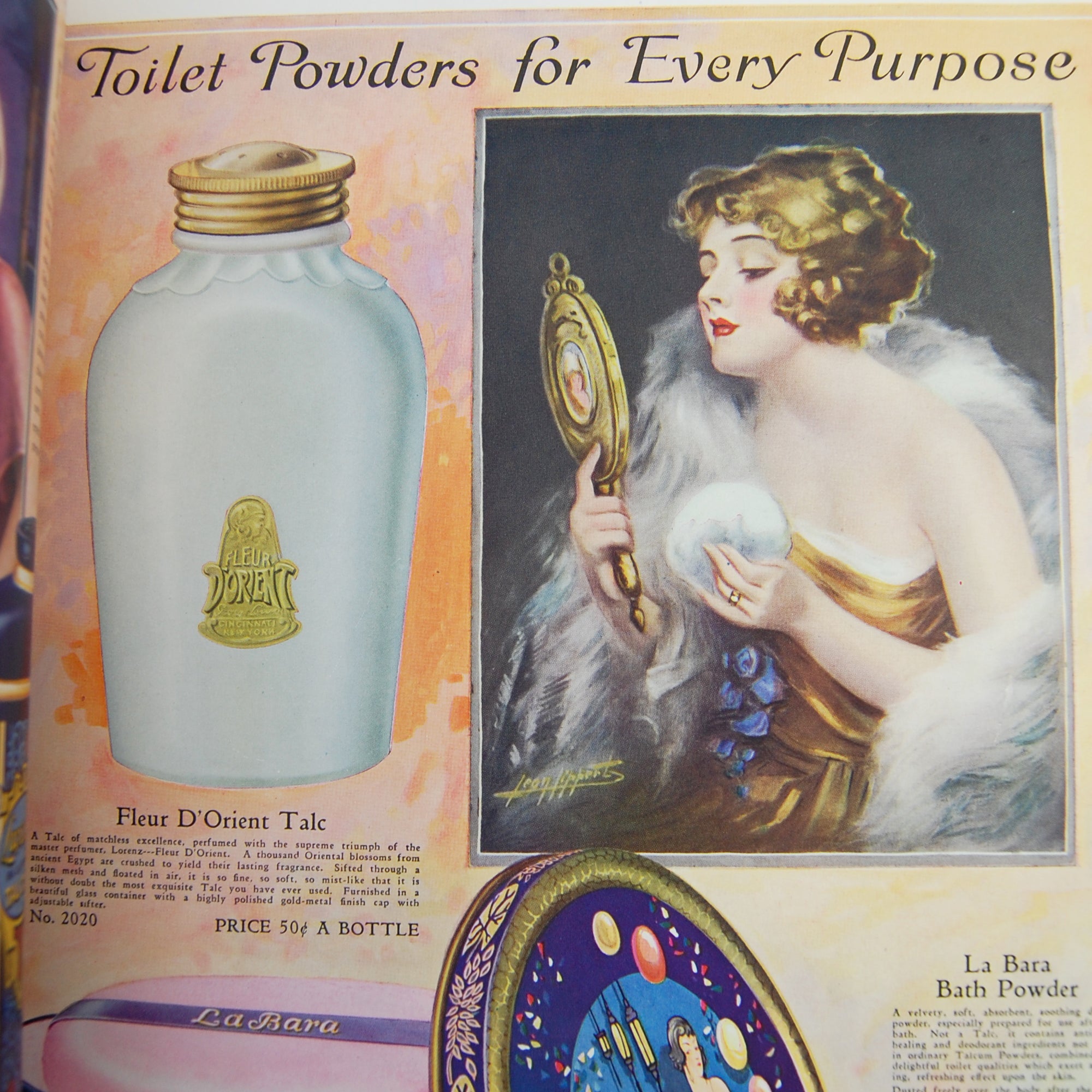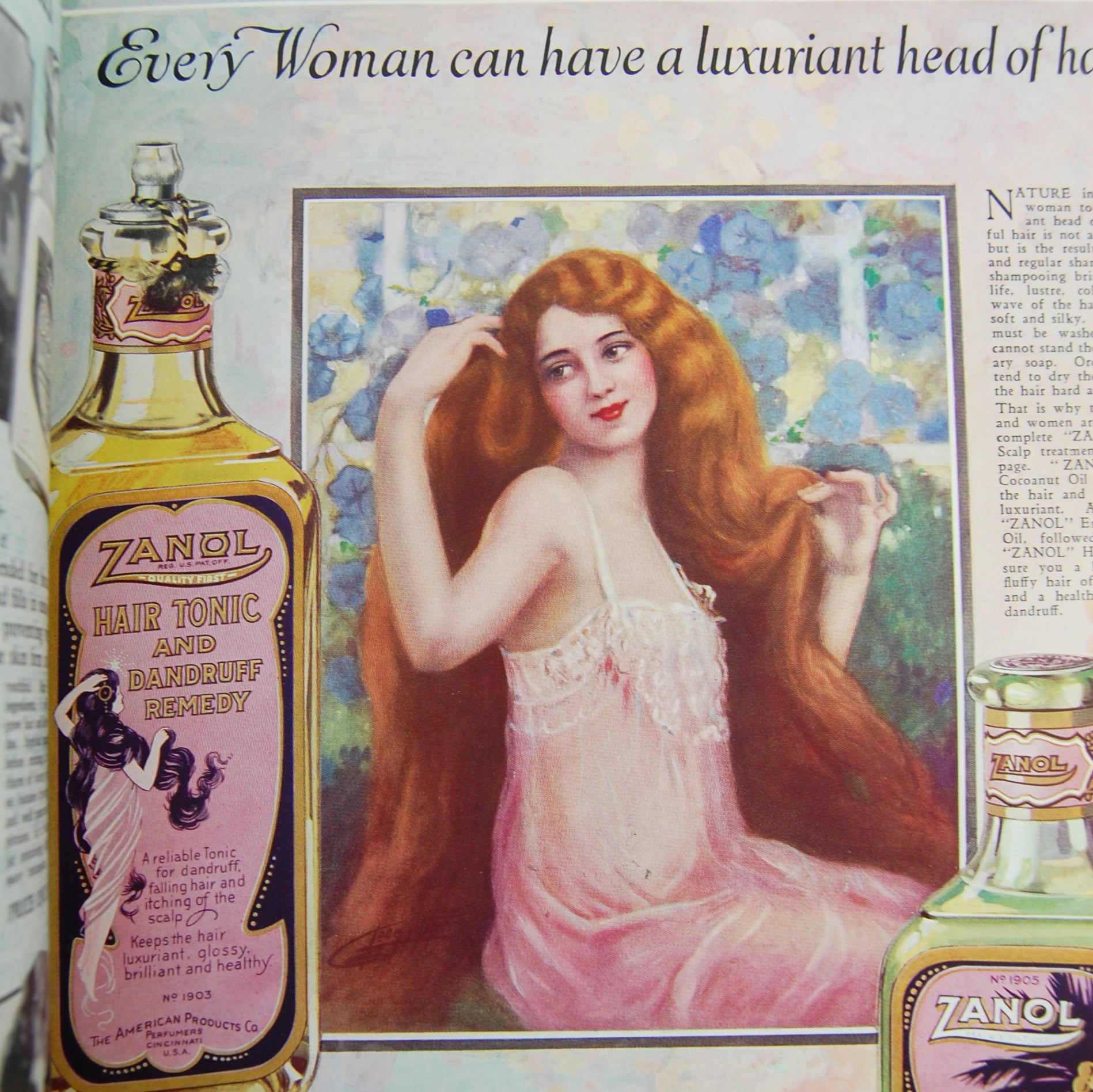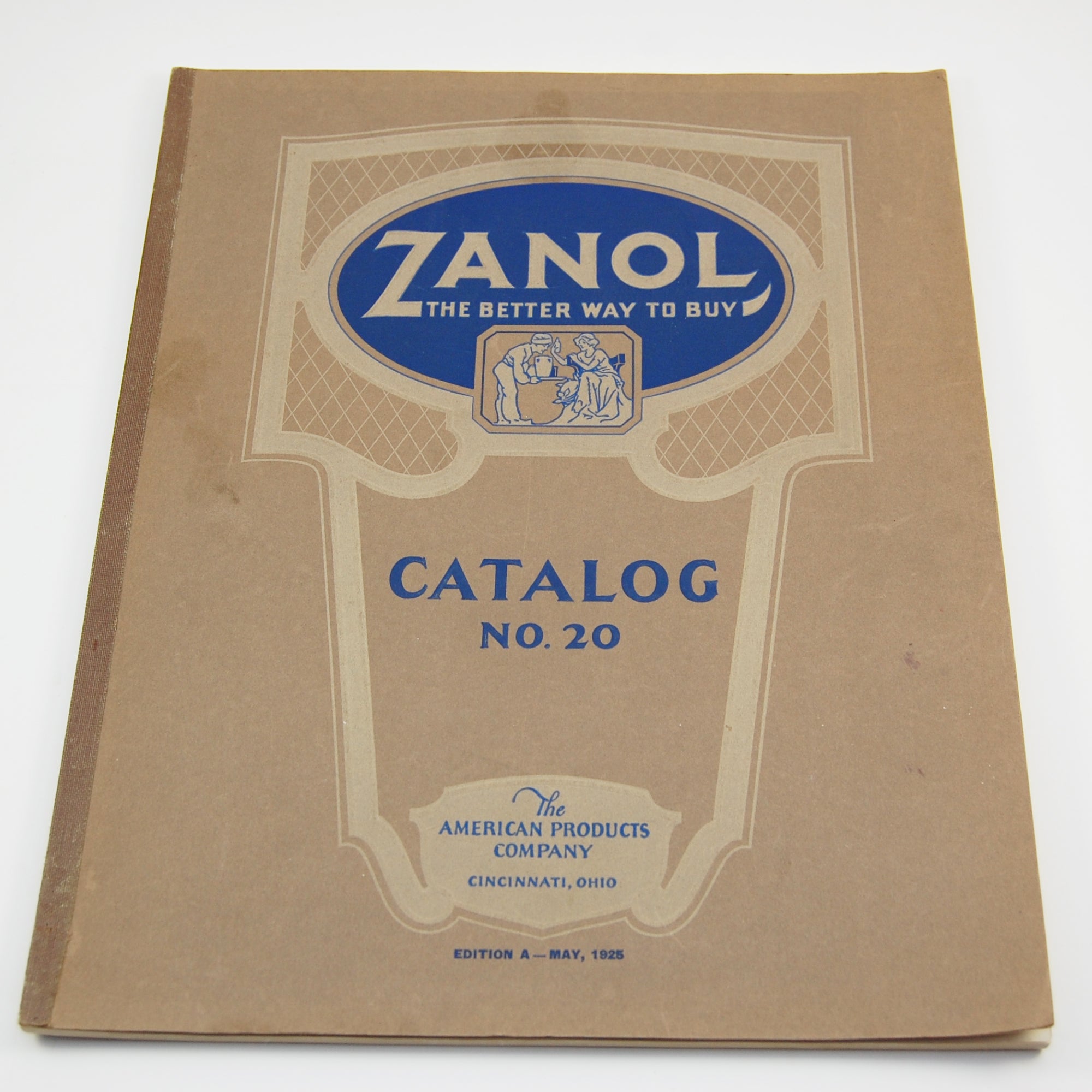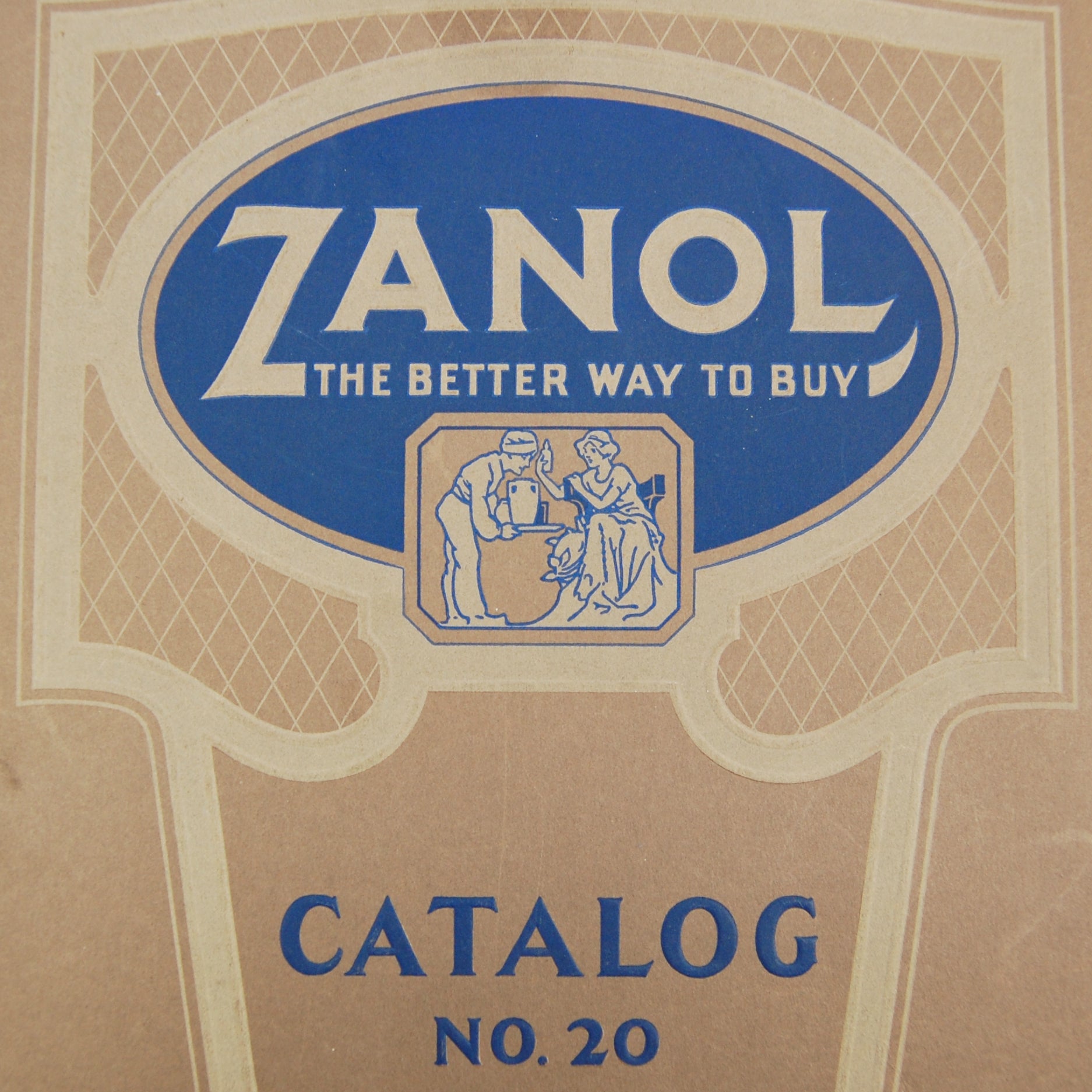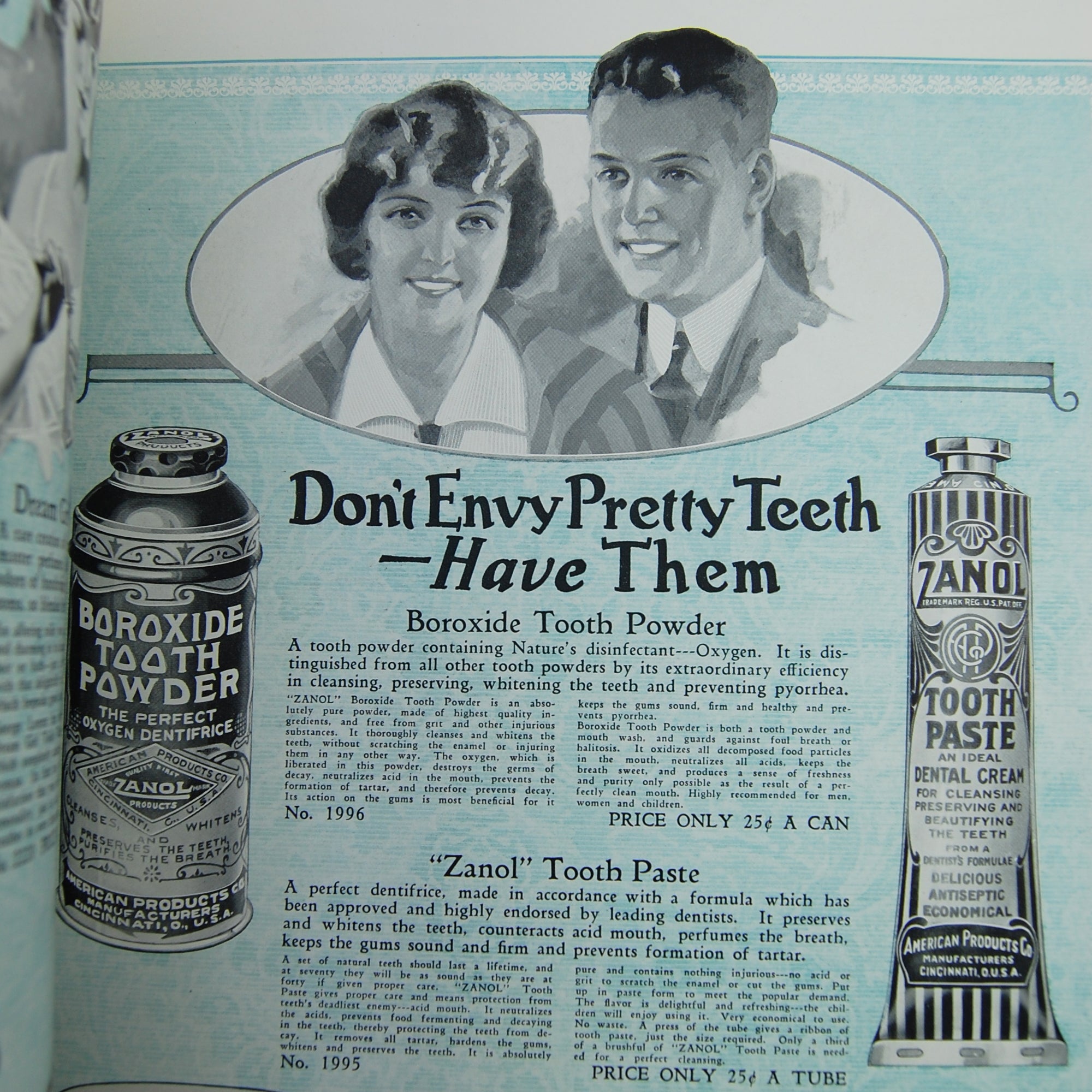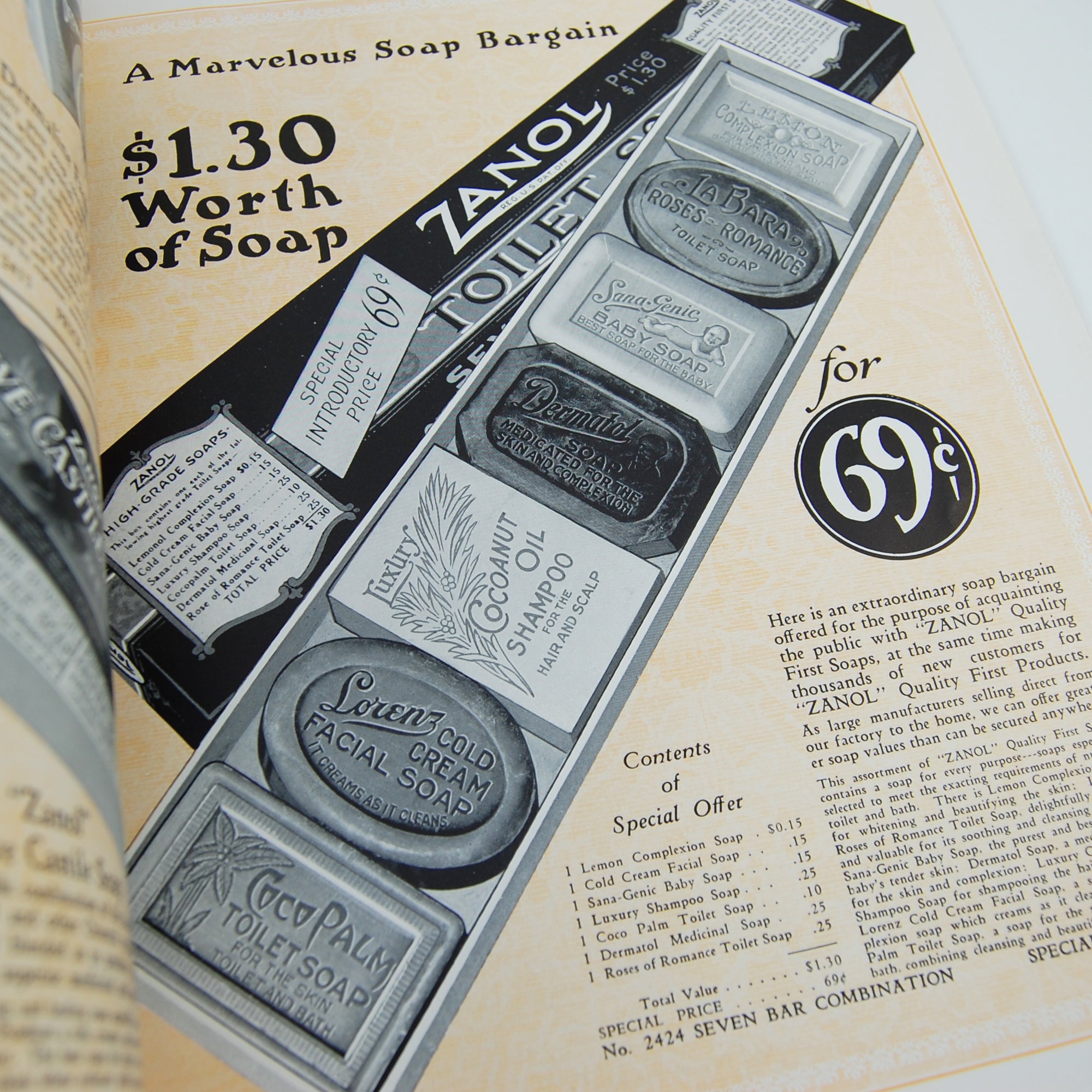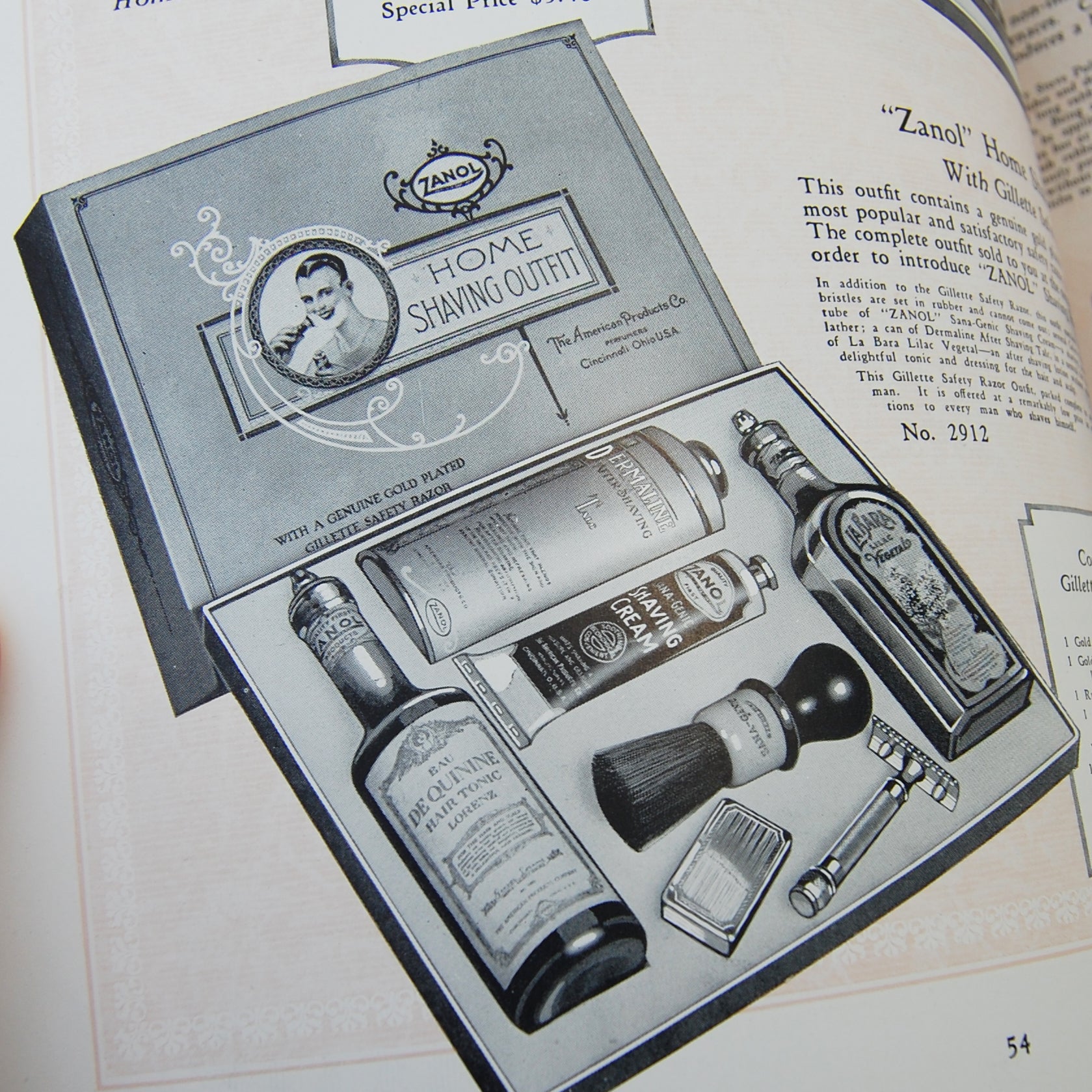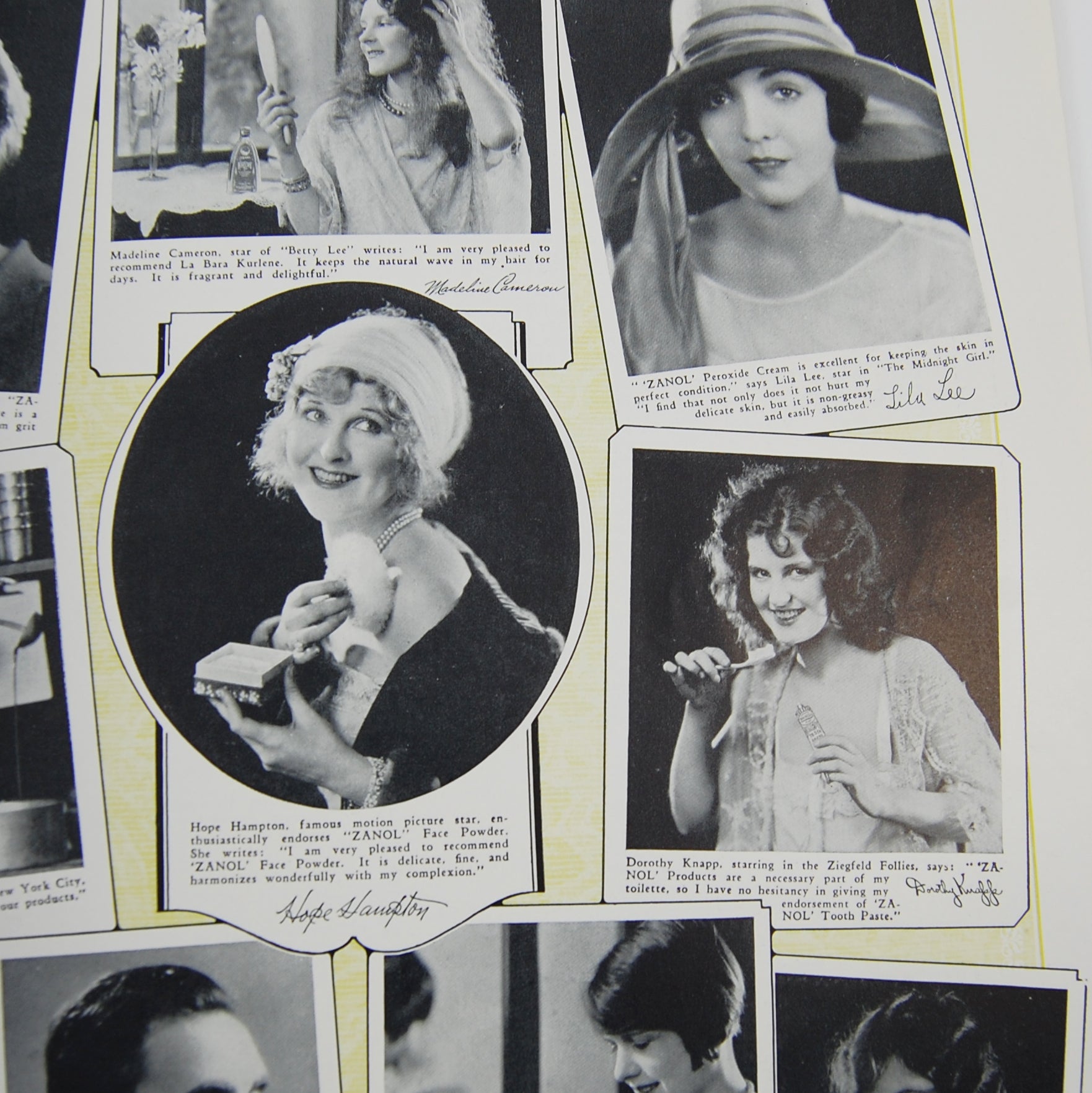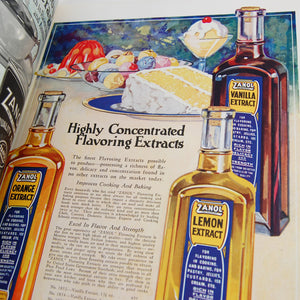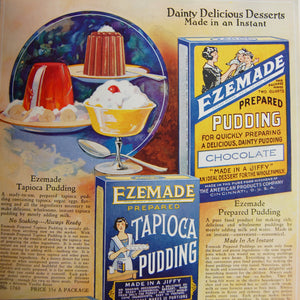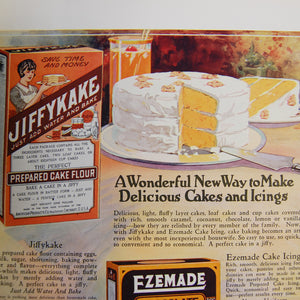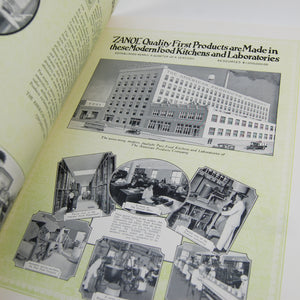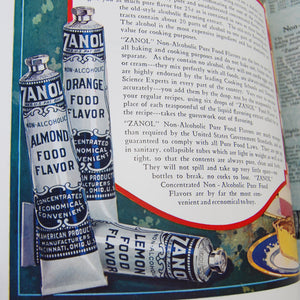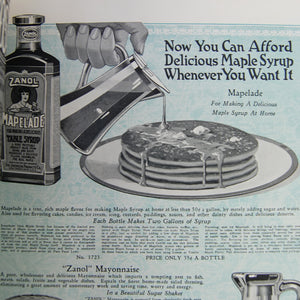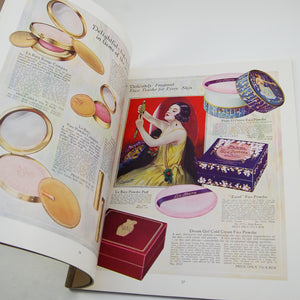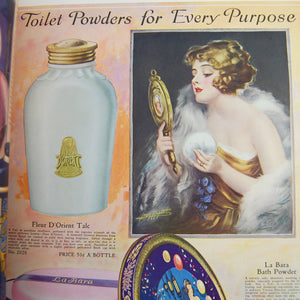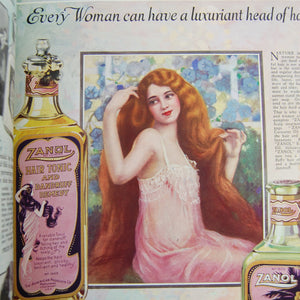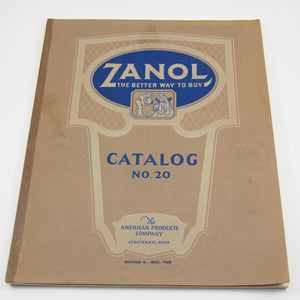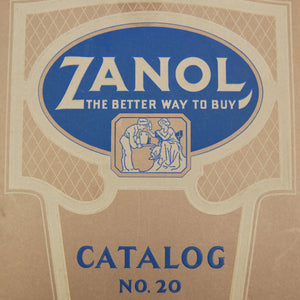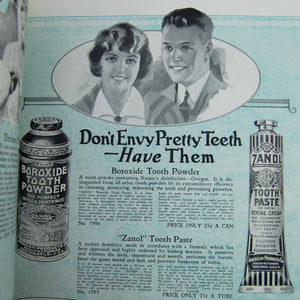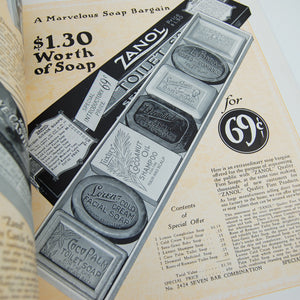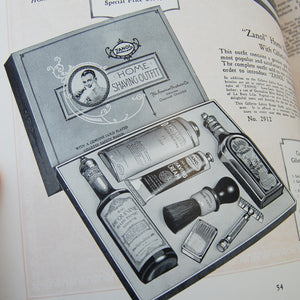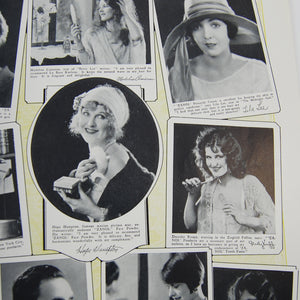Agriculture & Food Science
Buckland, Frank T. | Fish Hatching
£75.00
-
First edition. A lovely, fresh copy of this important early work on raising young salmon by the Victorian Era's leading authority on pisciculture.
The naturalist Francis Trevelyan Buckland (1826-1880) began his career as a military surgeon in London, where he "eagerly embraced every opportunity of examining curious specimens of natural history, and abnormal growths, describing his observations in his Curiosities of Natural History, begun in 1858". In 1856 he joined the staff of the Field newspaper, and in 1865 he founded his own journal, Land and Water, an ‘independent channel for diffusing knowledge of practical natural history, and fish and oyster culture’.
Buckland "applied himself to the many economic questions affecting the artificial supply of salmon, the length of the close season, the condition of different salmon rivers, and similar investigations, gradually becoming the highest authority on pisciculture. In February 1867... he was appointed inspector of salmon fisheries. No more congenial post could have been offered to him, and from then on he devoted all his energies not merely to the duties of his office, but to the study of every point connected with the history of the salmon, and endeavoured in every way to improve the condition of British fisheries and those employed in them. This involved frequent visits to the rivers and coasts of the country, when he was always a welcome guest among people of all classes" (ODNB).
This volume was originally presented as a lecture at the Royal Institution in April, 1863. Buckland wrote in the preface that it was "a record of the observations which I have made during my experiments in Fish Hatching carried out during the winter months". He also thanked "Professor Faraday for his kind attention" as well as "Professor Tyndall, who was good enough to exhibit the young fish alive under the electric lamp, thereby adding so much to the general interest which I was most pleased to hear was caused among those present on the night of the Lecture".
In May 1865 Buckland was appointed scientific referee to the South Kensington Museum (now the Science Museum), where he established a large collection related to pisciculture which formed the basis of the International Fisheries Exhibition of 1883 and was on display until the latter half of the 20th century. "In his lifetime Buckland was regarded as one of the most whimsical of naturalists and, with all its stories of his doings and escapades, his biography was published in popular fiction as a ‘good romance'" (ODNB). - London: Tinsley Brothers, 1863. Octavo. Original green pebble-grain cloth, titles to spine gilt, boards blocked in blind. Frontispiece. Contemporary ownership signature to front pastedown. Just a little rubbing at the extremities, minor spotting to edges of textblock. A fresh and attractive copy in excellent condition.
Patterson, Flora W. & Vera K. Charles | Mushrooms and Other Common Fungi
£35.00
-
First edition of this well-illustrated guide to mushroom identification for the amateur collector.
The first female mycologist to work at the United States Department of Agriculture, Flora Patterson (1847-1928) exhibited “the tenacity, audacity, and perspicacity of a true scientific visionary” (Reynolds, “Flora Patterson”, Women in Microbiology, p. 219). She initially studied fungi as a childhood hobby, then attended several universities as a non-traditional student, taking a plant pathology course at Iowa State and completing her education at Radcliffe College, from where she was able to work in the Harvard Grey Herbarium.
At the USDA Patterson “published on edible and poisonous mushrooms and on fungus diseases of economic importance, working and publishing with the mycologist Vera Charles” (Ogilvie, p. 990). Patterson directed the US National Fungus Collections for nearly thirty years, growing it from 19,000 to 115,000 specimens. She was in charge of identifying fungal diseases of agricultural importance, and made numerous important contributions in this area, including the identification of chestnut blight and pineapple rot. Her involvement in Japan’s gift of cherry trees to the US led to the passage of the Plant Quarantine Act of 1912.
-
Washington D.C.: Government Printing Office for the United States Department of Agriculture, 1915.
Octavo. Original cream wrappers printed in black. 38 plates from photographs. Wrappers faintly toned, mild dampstain affecting the lower corner of the wrappers and text, with some abraded areas where the corners of the leaves have stuck together, not generally affecting text. Very good condition.

Schultes, Richard Evans & Albert Hofmann | Plants of the Gods. Origins of Hallucinogenic Use
£500.00
-
First edition, first printing of this key reference on hallucinogenic plants by two leaders of the 20th-century psychedelics movement. Copies in fine condition such as this one are particularly uncommon.
Widely considered the founder of modern ethnobotany, Richard Schultes (1915-2001) spent most of his career travelling the Amazon, where he consulted with indigenous people and investigated the plants they used for religious and medicinal purposes. His co-author, Albert Hoffman (1906-2008), was the Swiss chemist who first synthesised LSD and discovered its hallucinogenic effects, and who later isolated psilocybin and psilocin, the primary psychedelic compounds in mushrooms. This volume, copiously illustrated and written for a popular audience, describes the primary species of psychoactive plants and explores their use around the world and throughout history.
-
New York: McGraw-Hill, 1979.
Quarto. Original green cloth, title to spine and design to upper board gilt. With the dust jacket. Colour illustrations throughout. A fine copy.
Shields, E. Floyd | Coachella Valley Desert Trails and The Romance and Sex Life of the Date
£85.00
-
First edition of this charming tourist booklet promoting the Coachella Valley and Shields Date Gardens, the famous “home of the date shake” on Highway 111 in Indio, California.
Date agriculture was introduced to the Coachella Valley when the US Department of Agriculture set up an experimental station in the region in 1904. “In the following decades, crop production grew exponentially, from approximately 100,000 pounds in 1919 to 1 million pounds in 1926, and then by 1955 to 48 million pounds of dates” (Conrad, “From Experiment to Celebrated Product, Dates Find a Home in Coachella Valley”, The Desert Sun.) Today the valley is home to the majority of US date farms.
The Shields Date Gardens were founded by E. Floyd and Bess Shields in 1924. Floyd was a pioneering agriculturist who developed several of his own date varieties and invented products like date sugar and date crystals for use in cooking, including in the date milkshakes sold at the gardens. He was an indefatigable marketer, directing tourists to the farm shop with a giant knight in armour, the “guardian of quality”, and offering lectures on date cultivation to the public. “The lectures proved to be a popular draw, leading Shields to incorporate a slide show and recorded soundtrack into a multimedia production. The 15-minute presentation, ‘The Romance and Sex Life of the Date,’ modified only slightly over the years, is still shown today in a small theater” (Sellers, “A Date in the Desert, California Bountiful, the California Farm Bureau, March/April 2009).
This guidebook directs tourists to local sites in “the land of romance and sunshine”, including 29 Palms and Joshua Tree (created as a National Park only fifteen years previously), the Salton Sea, Palm Springs, Painted Canyon, the All American Canal, and the annual “Arabian Nights” pageant. The second half is based on ‘The Romance and Sex Life of the Date’. Well-illustrated from photographs taken on the Shields’ farm, it focuses on the difficulty of propagating, caring for, and hand-pollinating the palms, and educates consumers on the economics of date agriculture, suggesting the prices they should expect to pay for high-quality fruit.
Also advertised in the booklet are Shields’ unique products, including date sugar, butter, and crystals, with suggestions and recipes for their use. “Two-thirds grapenuts and one third Shields Date Crystals make a wonderful breakfast. Shields Date Crystals can also be used dry on any kind of cereal, salads, ice cream, etc... As an after school snack for the children Shields Date Crystals will make a delicious and healthful sandwich — suggest using graham crackers.” -
Indio, CA: Shields Date Gardens, 1952.
40-page, wire-stitched pamphlet. Original buff wrappers printed in brown and orange with an image of the rising sun over a desert landscape to the upper wrapper and a cartoon of a knight pointing to the Shields farm on the lower wrapper. Illustrated throughout with photographs and maps. Partially erased price and a little light dampstain to the cover. Occasional tiny spots to contents, which are faintly toned. A clean and fresh copy in excellent condition.
The American Products Company | Zanol. The Better Way to Buy. Catalog No. 20
£450.00
-
A beautiful, 78 page chromolithographic catalogue for the American Products Company’s Zanol line of cosmetics, food products, and home goods, including 16 pages in full colour. A superb example of Art Deco marketing design.
The American Products Company was founded in 1907 by three brothers, Albert, Edgar and Clarence Mihalovitch (Albert later changed his surname to Mills), of Cincinnati, who hoped to capture the growing Midwestern consumer market (see “Cosmetics by the American products Company”, Collecting Vintage Compacts blog, January 2012). This catalogue promotes “Shopping in Your Own Home the Zanol Way”, and explains that “the Zanol plan affords you the opportunity of buying the finest products possible to produce, direct from the maker, delivered right to your home, absolutely fresh, unconditionally guaranteed... The complete Zanol line comprises more than 350 products... all of them made from the choicest ingredients in our sanitary, daylight Pure Food Kitchens and Laboratories, under the direction of skilled chemists, chefs, and dieticians”.
Advertised here are a wide array of consumables, with a focus on powders and syrups that could be shipped easily and would appeal to an emerging middle class who were time and money-conscious. For the kitchen there are food flavourings and colours, and numerous instant mixes for soft drinks, jams and jellies, icing, cakes, pies, and puddings. Among them are Ezemade pumpkin pie filling (”it is now possible to serve delicious pumpkin pie throughout the year”); Flakykrust instant pie crust; Mapelade instant maple syrup (”now you can afford delicious maple syrup whenever you want it”); and even Ezemade ice cream powder (”just add to a quart of milk and freeze”). The broad selection of home goods include medications and hygiene products, house cleaning and repair supplies, hot water bottles, paints, insecticide, and even a set of salt and pepper shakers. Perhaps the most appealing section is the beauty line, comprising soaps and toothpaste (”don’t envy pretty teeth - have them”); face and body powders; a variety of lotions including almond, lemon and witch hazel, cucumber and benzoine, and “dermaline of roses” (”keep the alluring charms of radiant youth”); shampoos, pomade, and hair tonics; cosmetics including powder compacts and tubes of lipstick; and perfumes, primarily their three main lines, La Bara (named after the silent film “vamp” Theda Bara, best known for playing Cleopatra), Fleur d’Orient, and Dream Girl. There are also a number of gift sets packaging perfumes, soaps and cosmetics, including a shaving kit for men, sets for new mothers, and an attractive La Barra manicure kit.
-
Edition A. Cincinnati, OH: The American Products Company, May, 1925.
Perfect bound (355 x 280 mm). Original brown wrappers printed in blue and cream, brown cloth backstrip. 78 pages, of which 16 are in full colour and the rest being uncoloured lithographs on single-colour backgrounds. With the original order form loosely inserted. Light rubbing at the extremities, small chips at the ends of the spine. A fresh copy in excellent condition.


